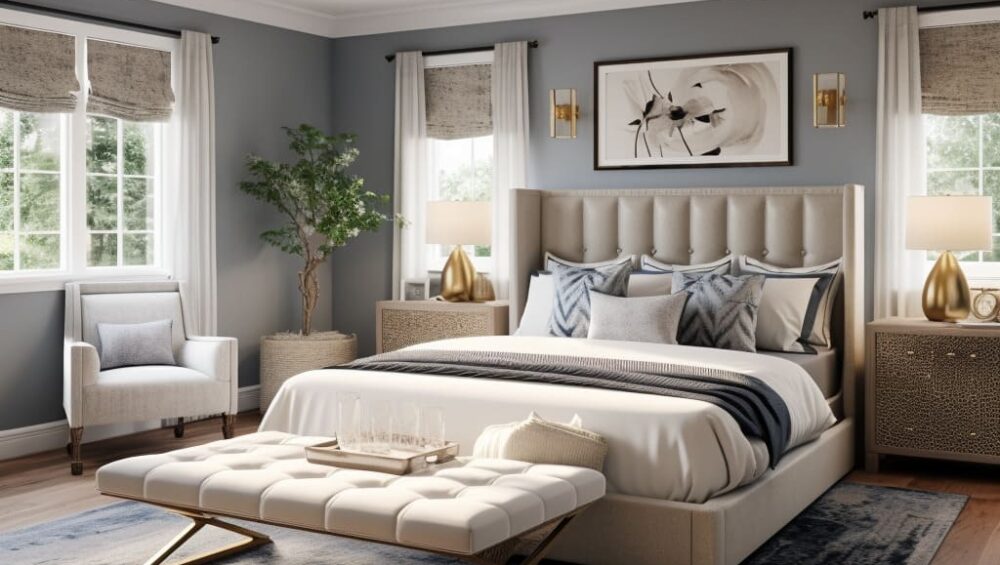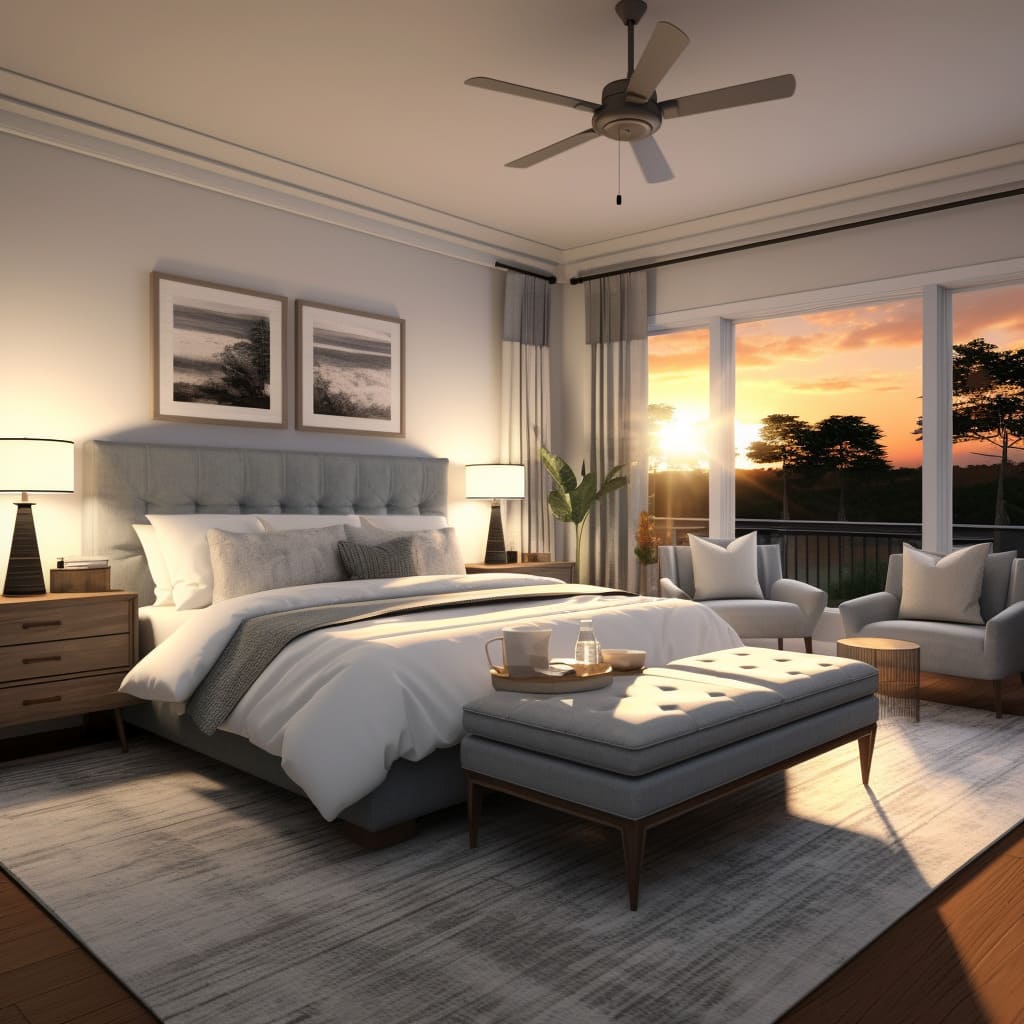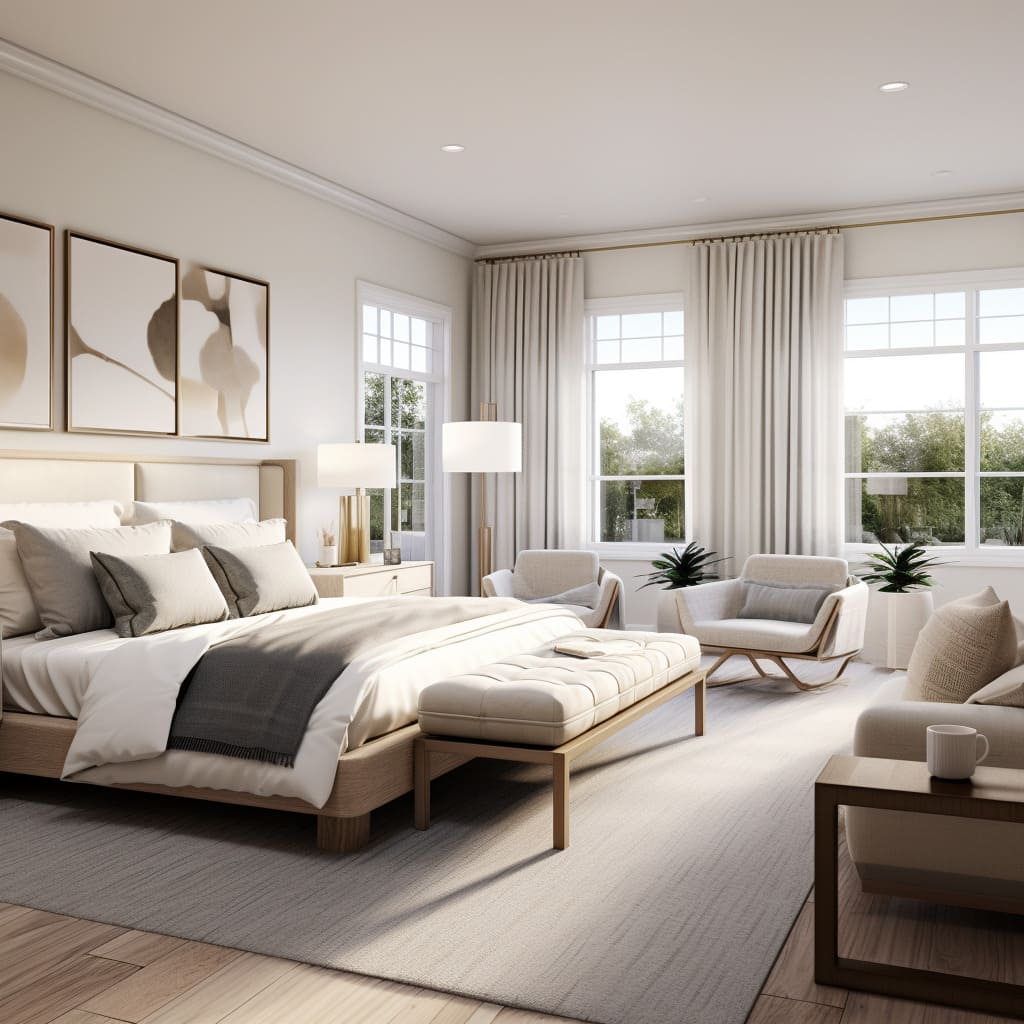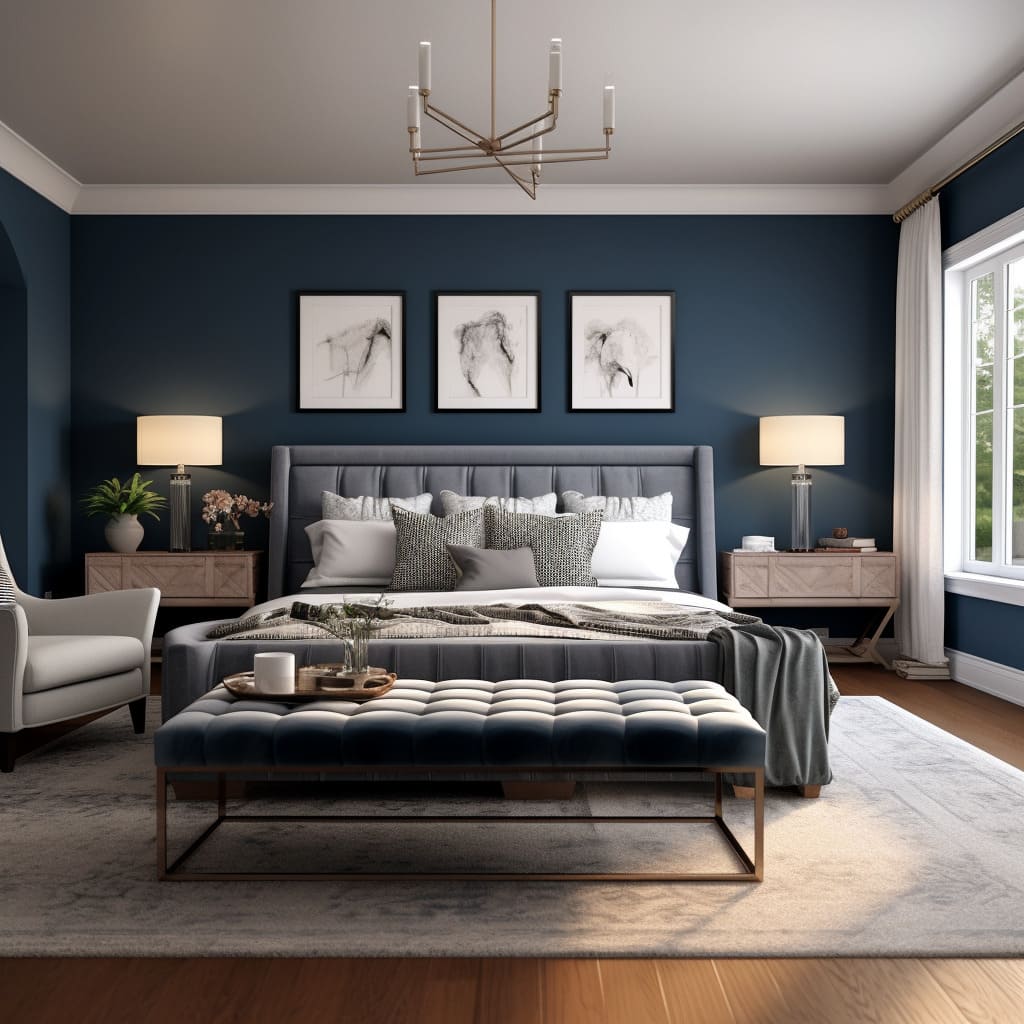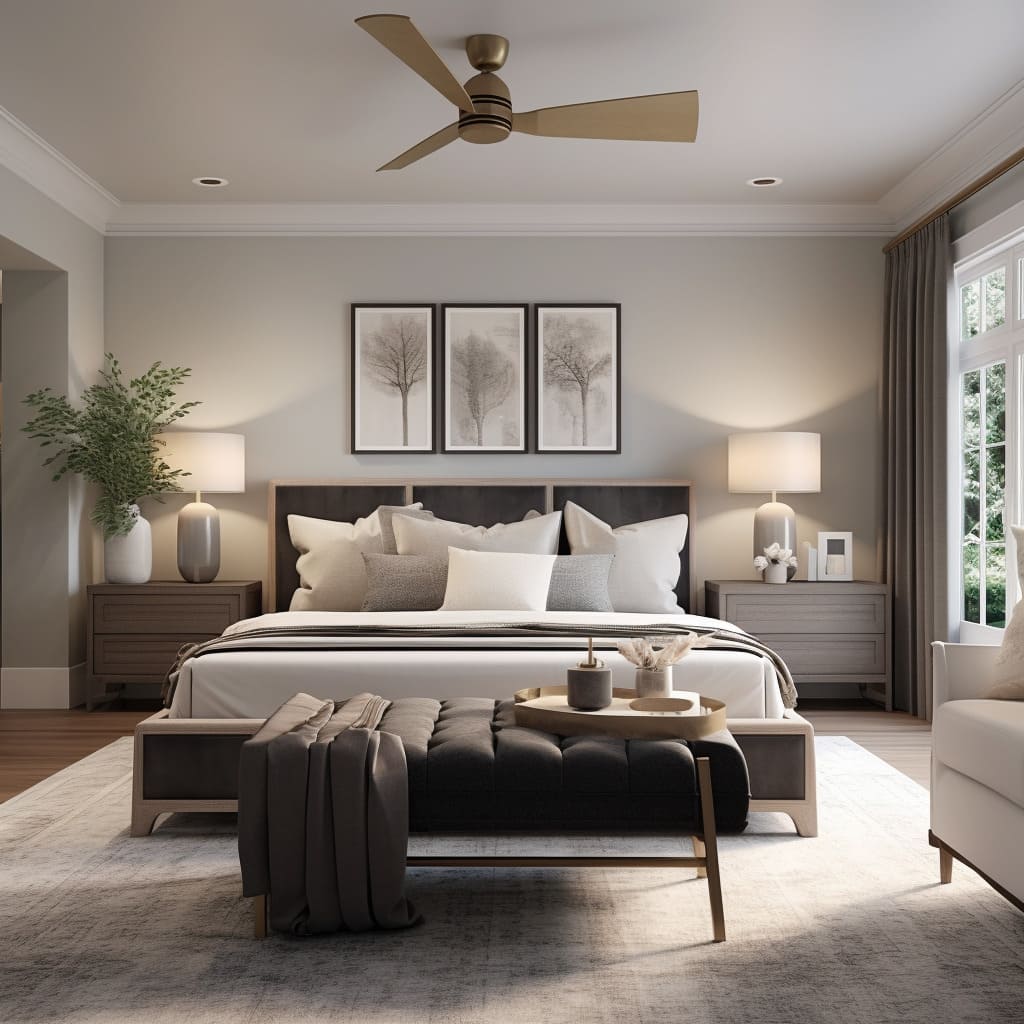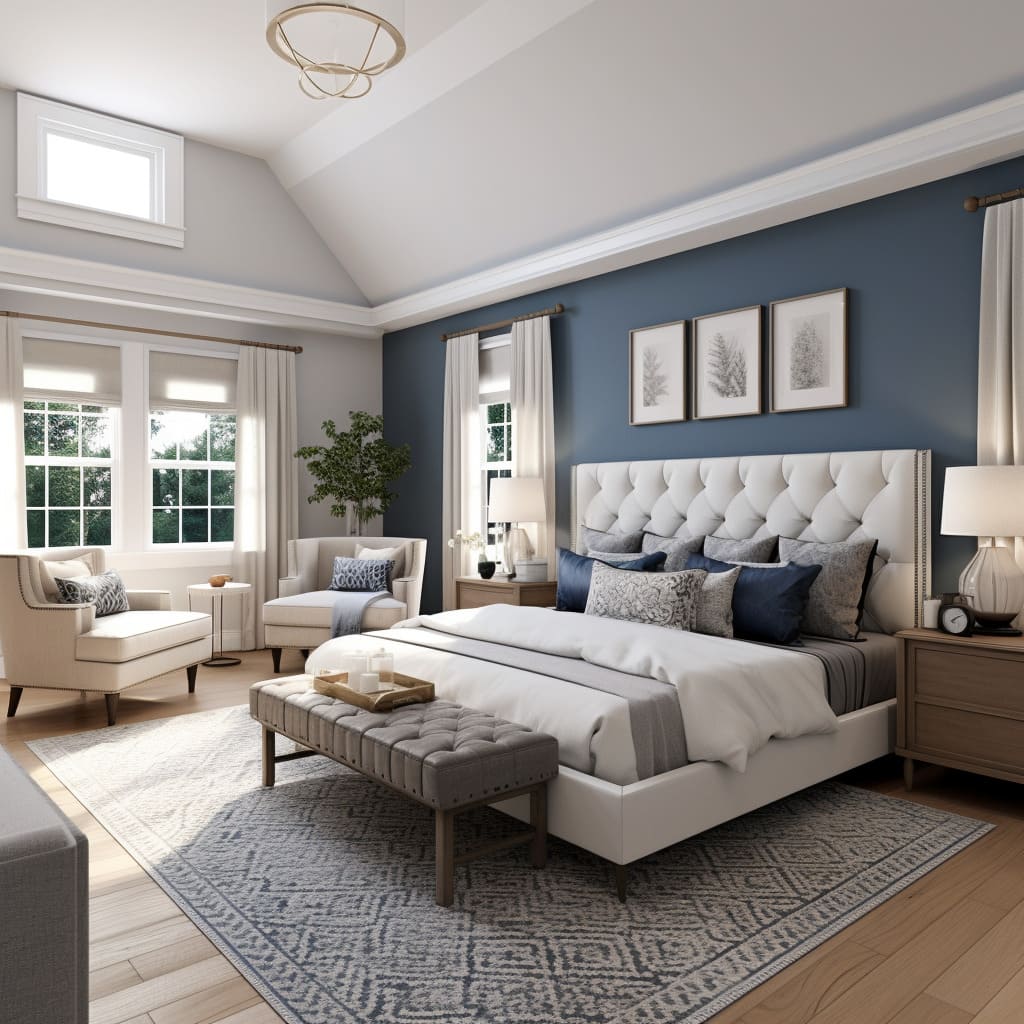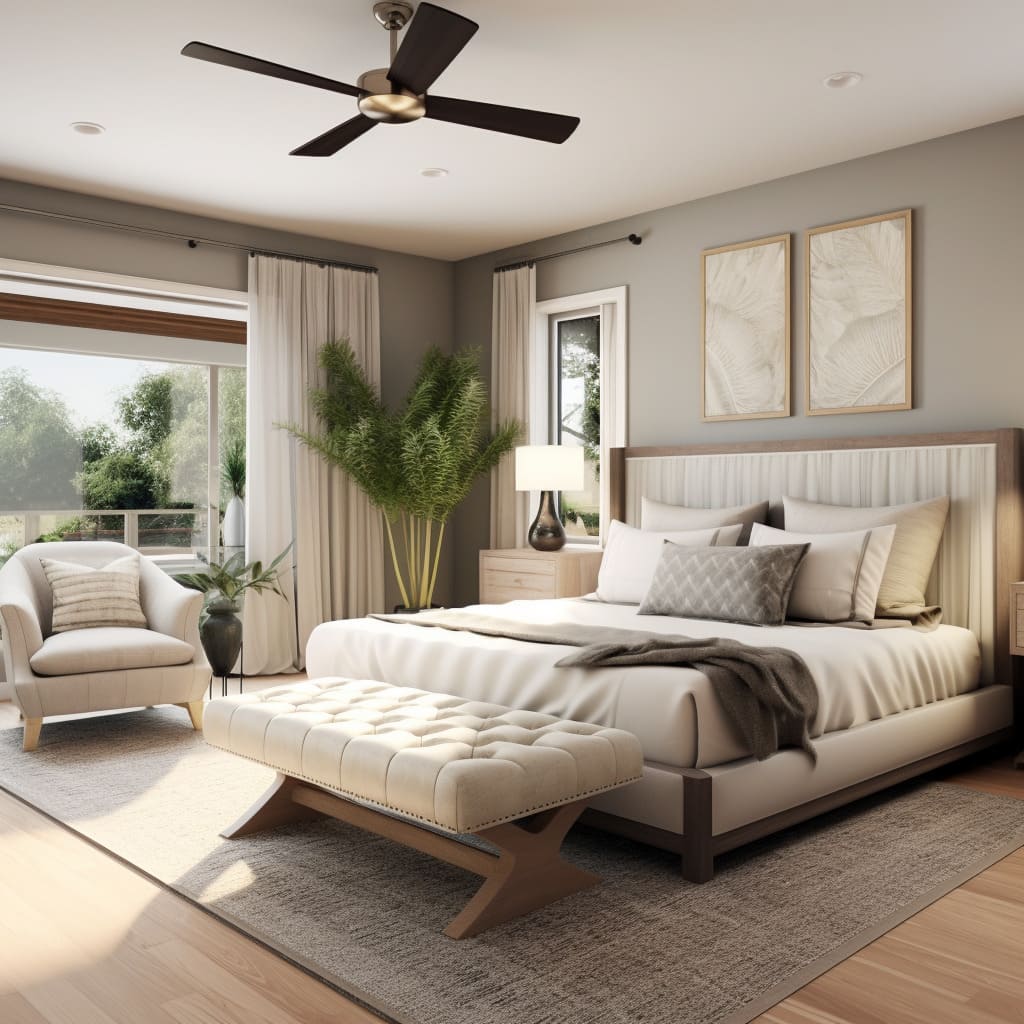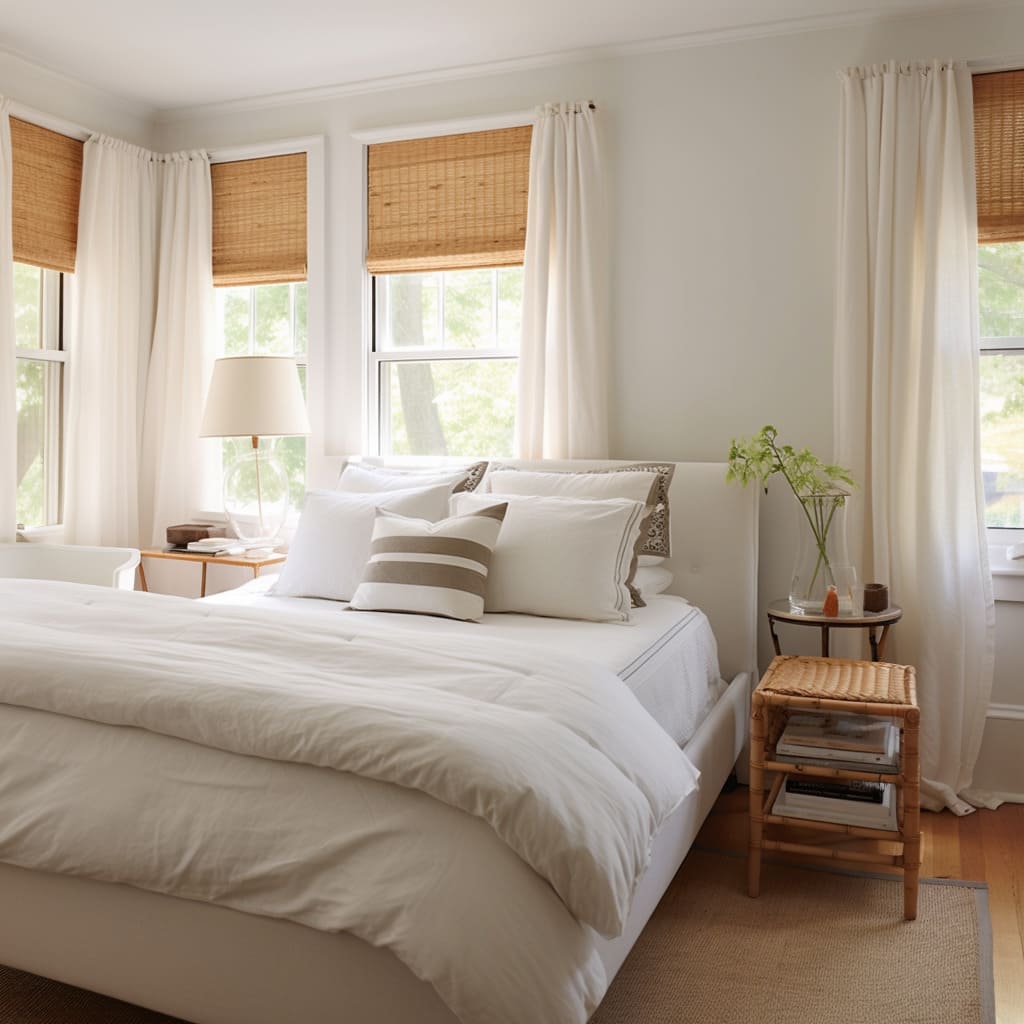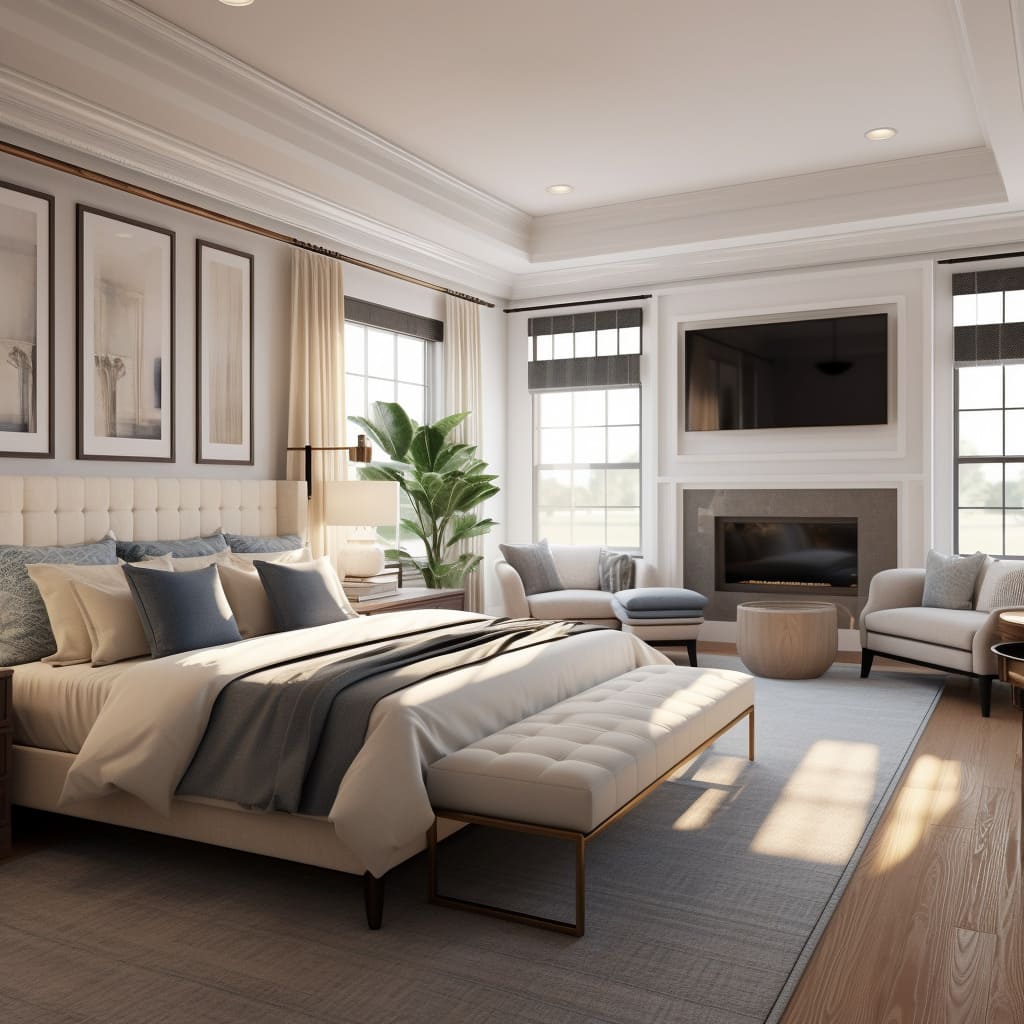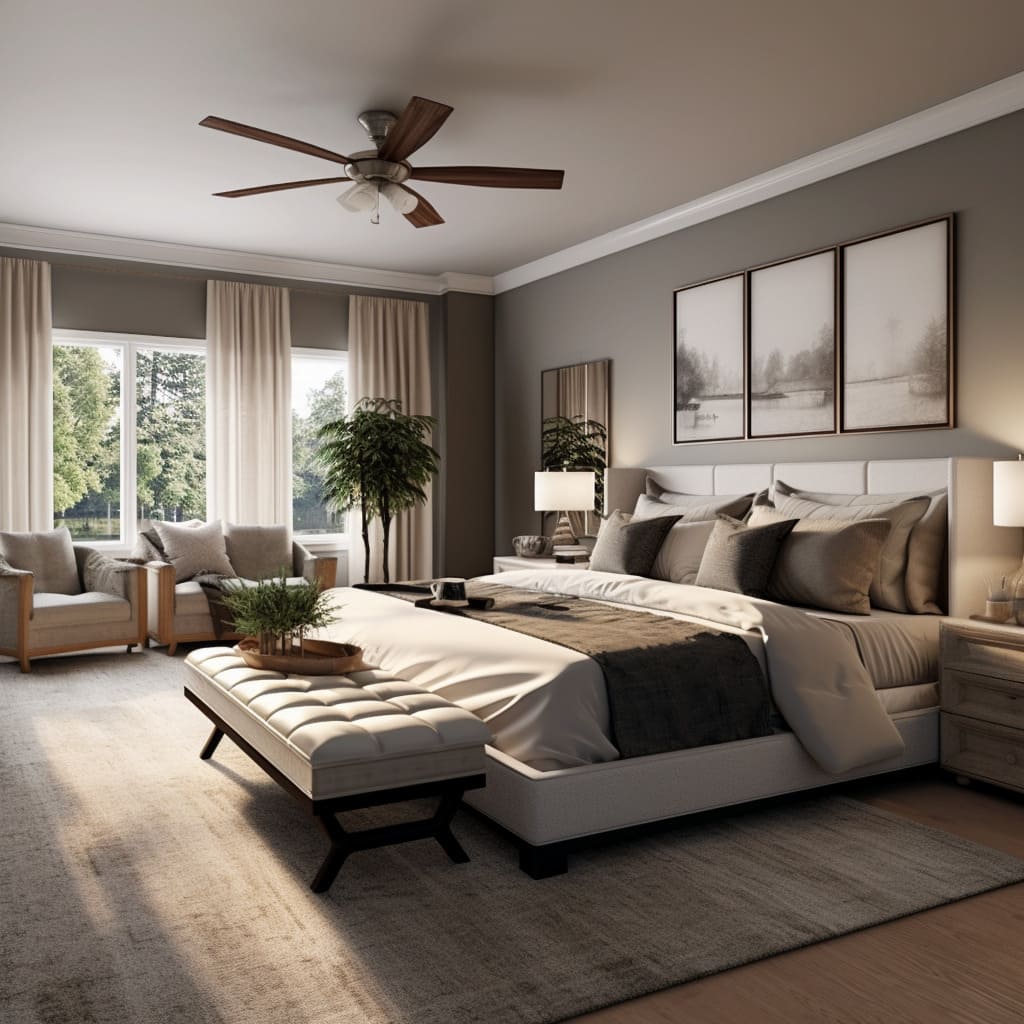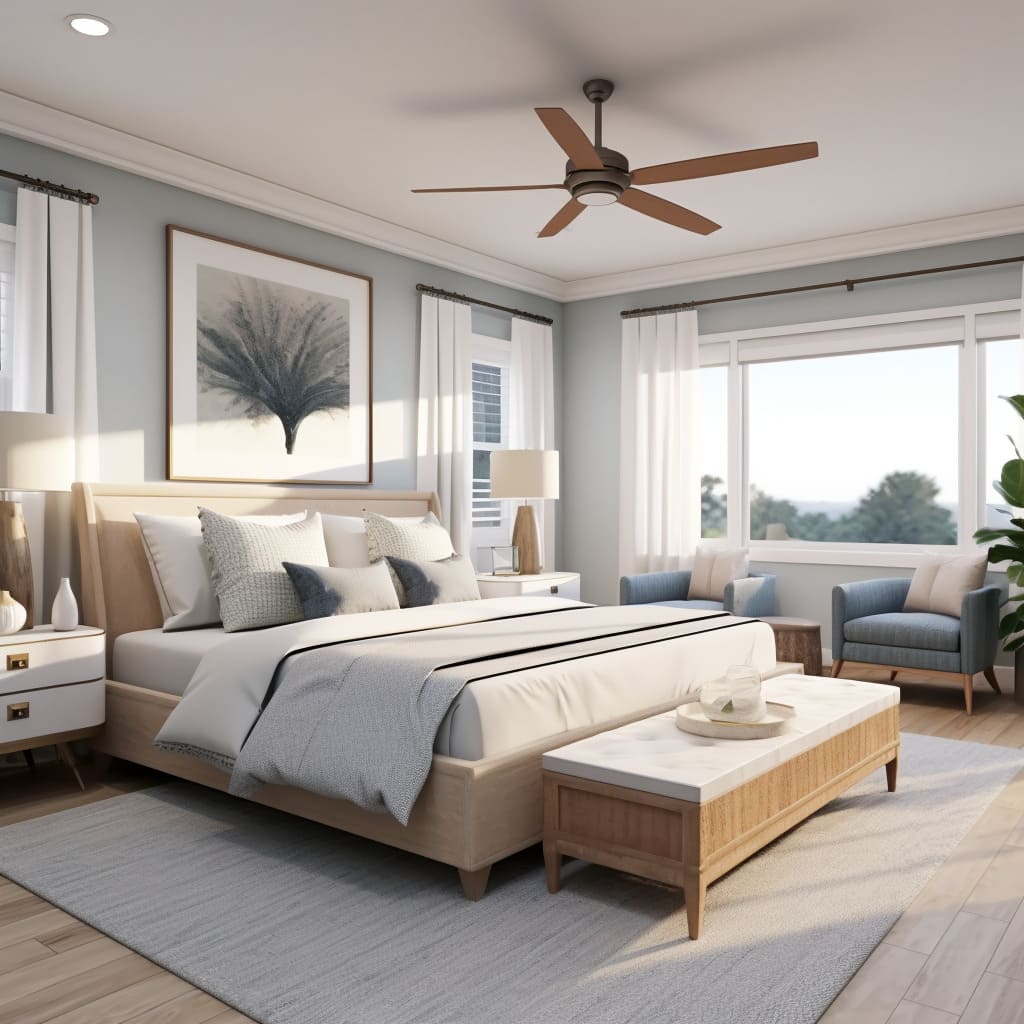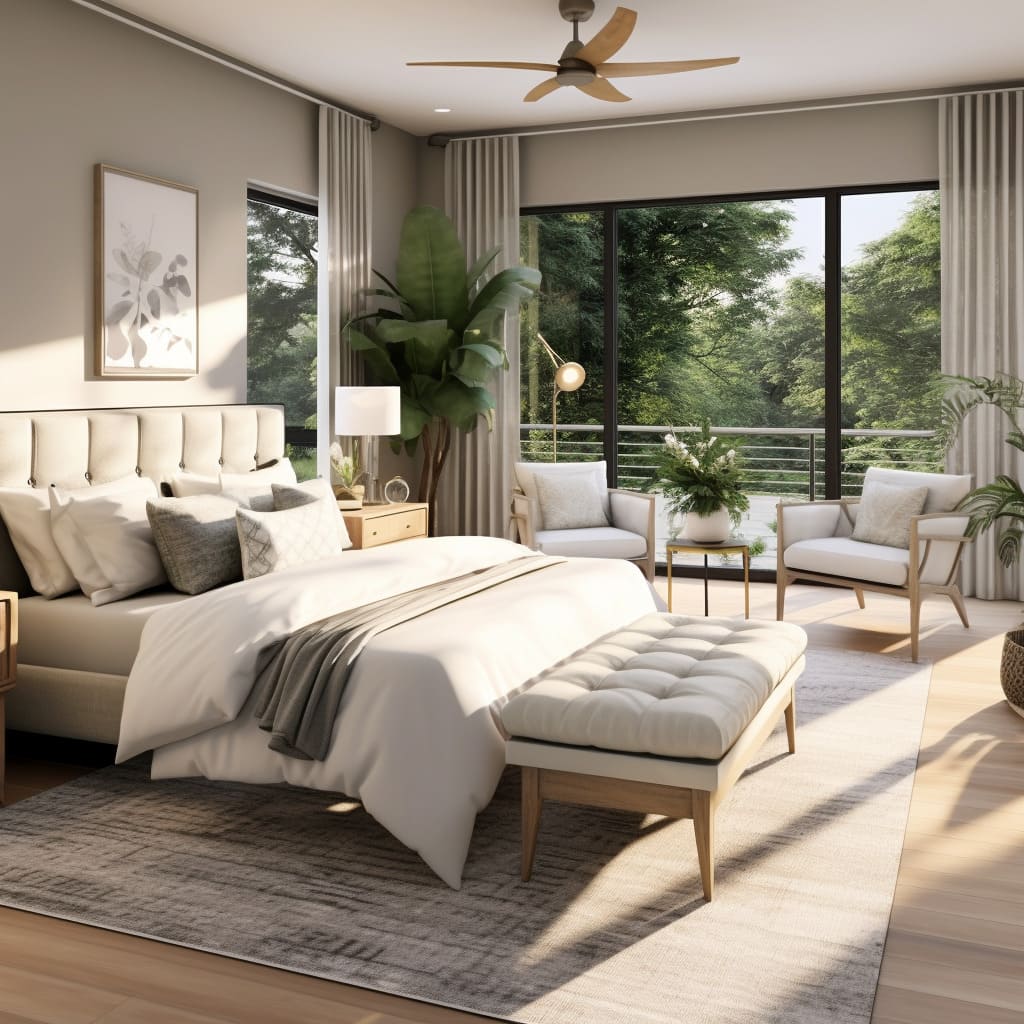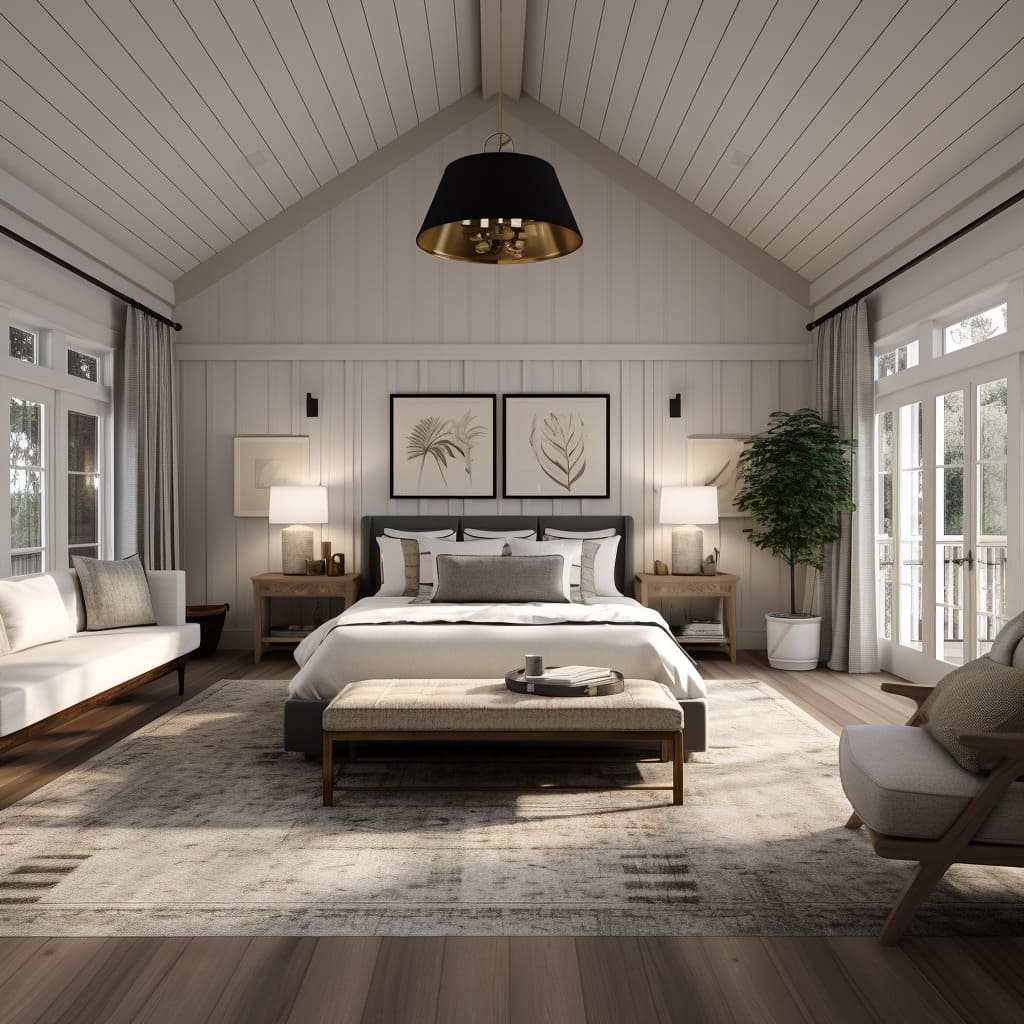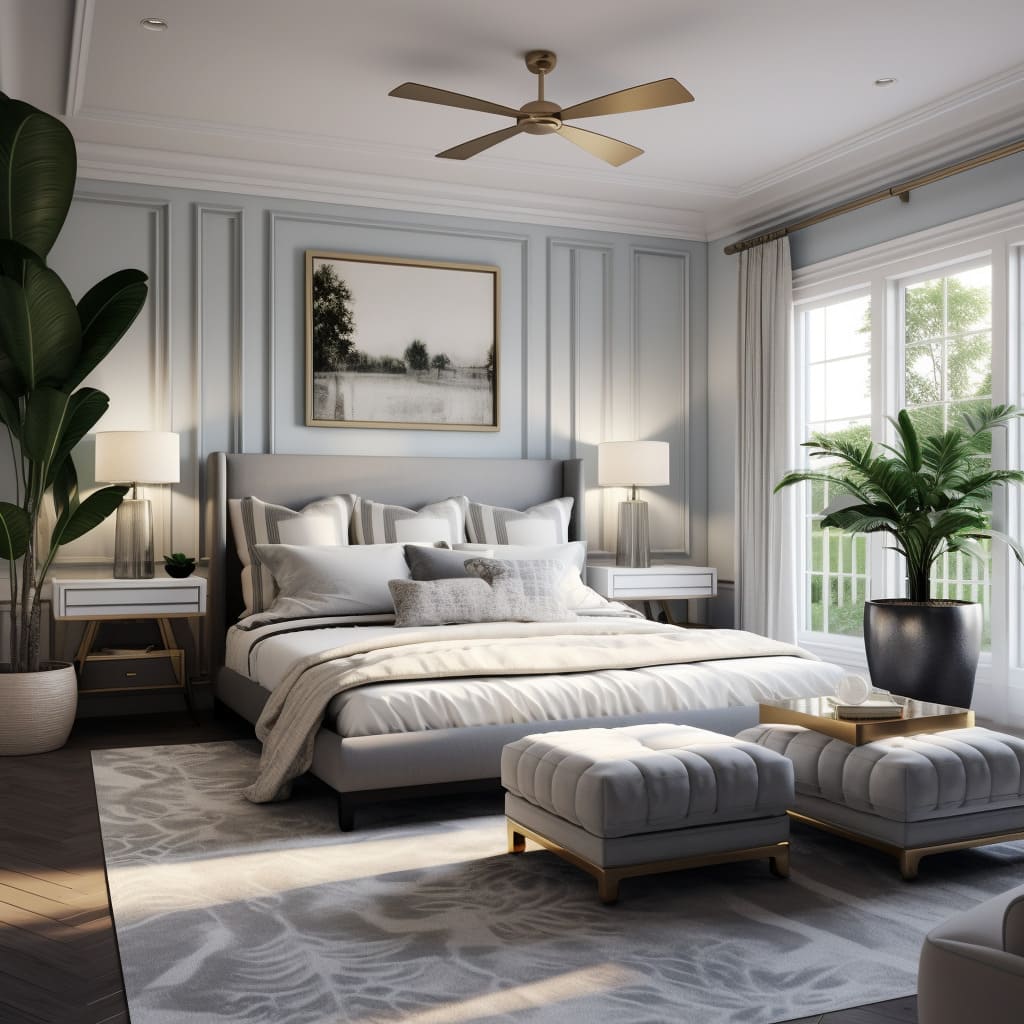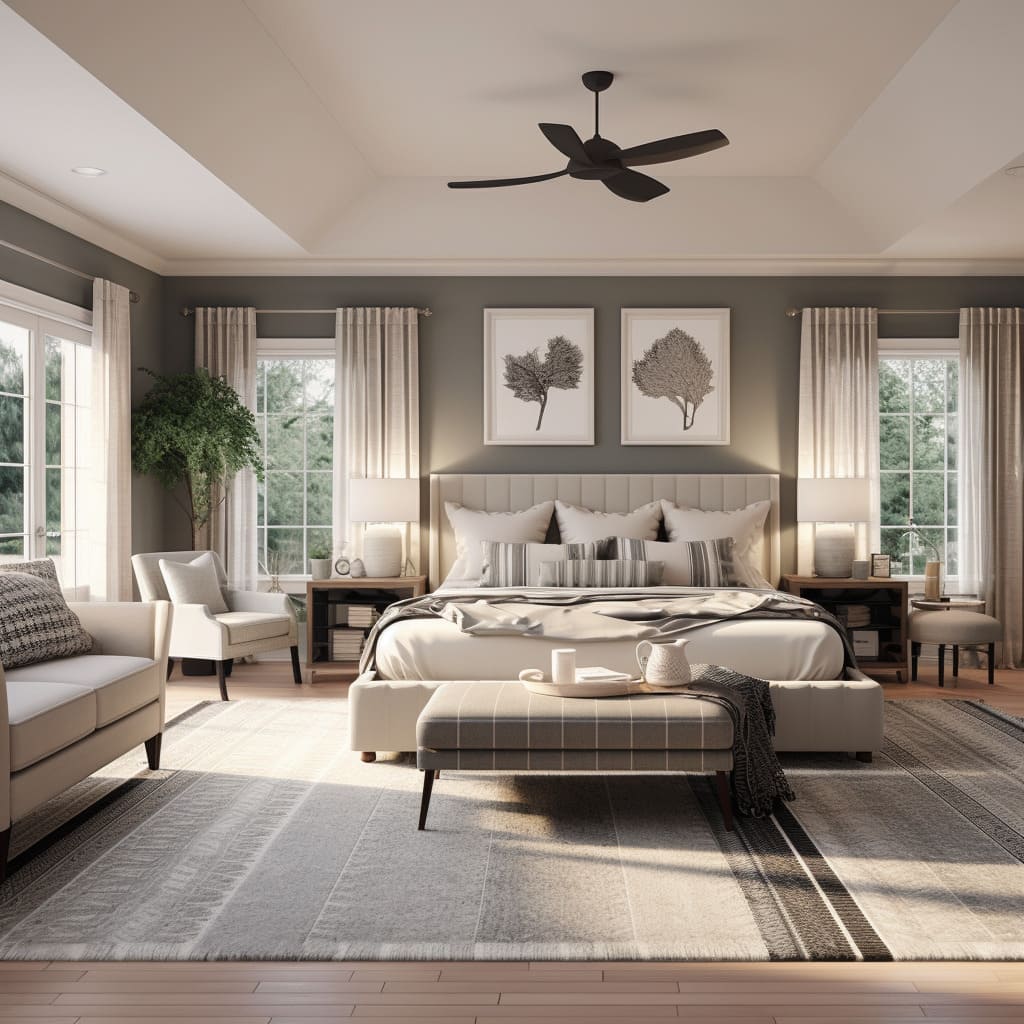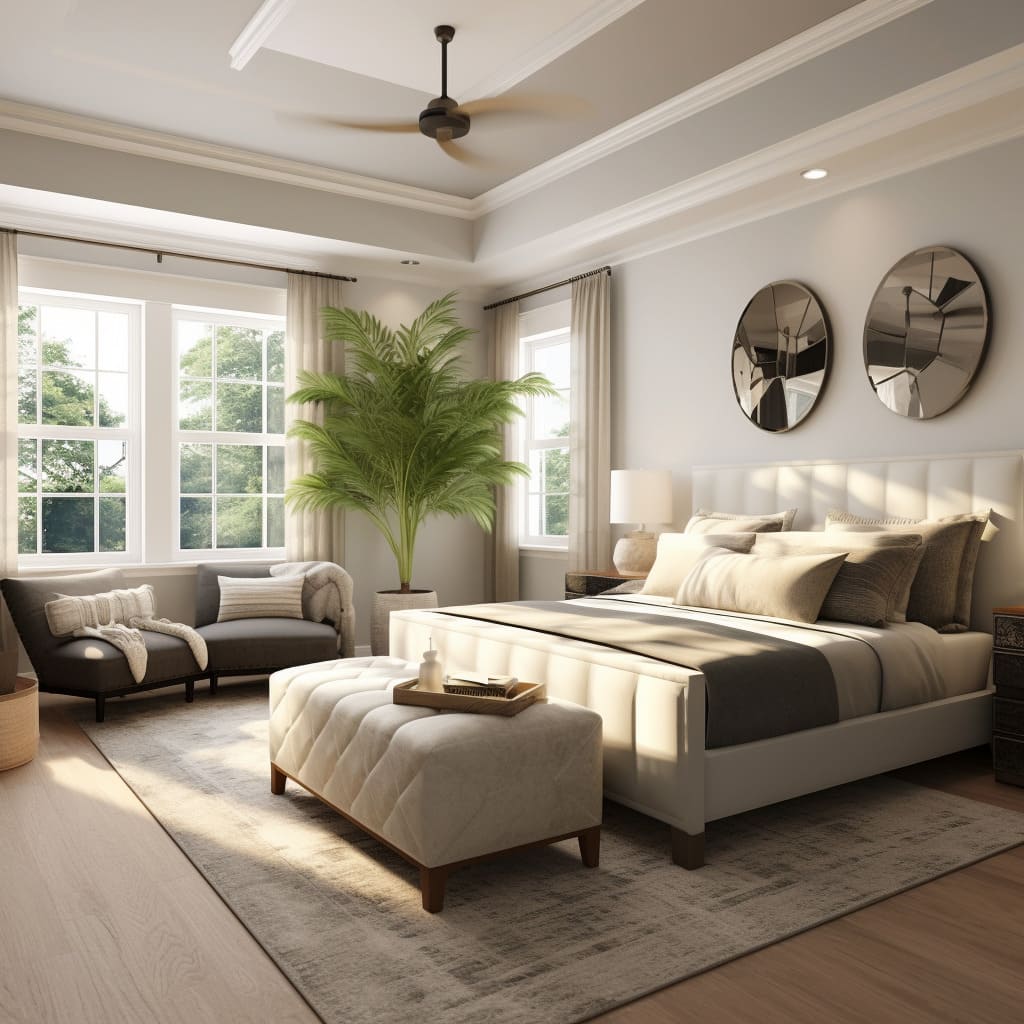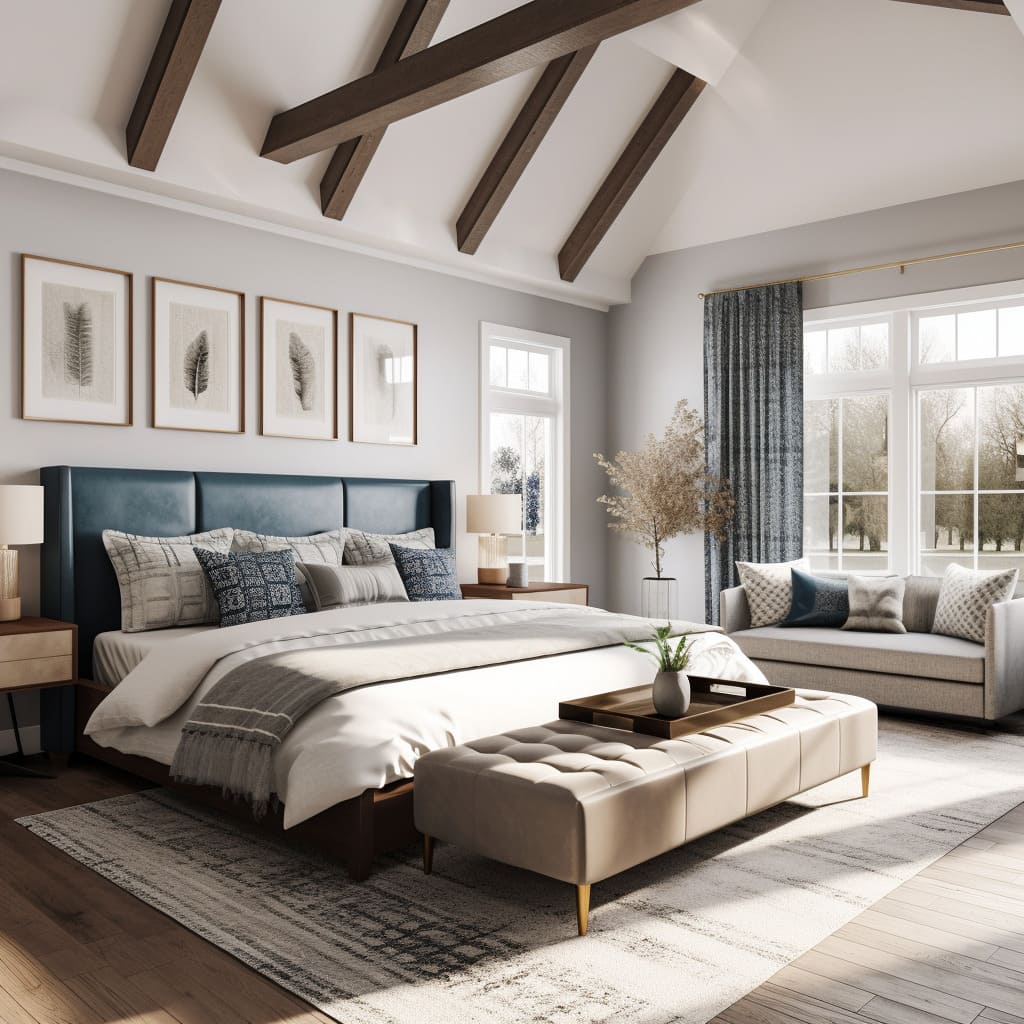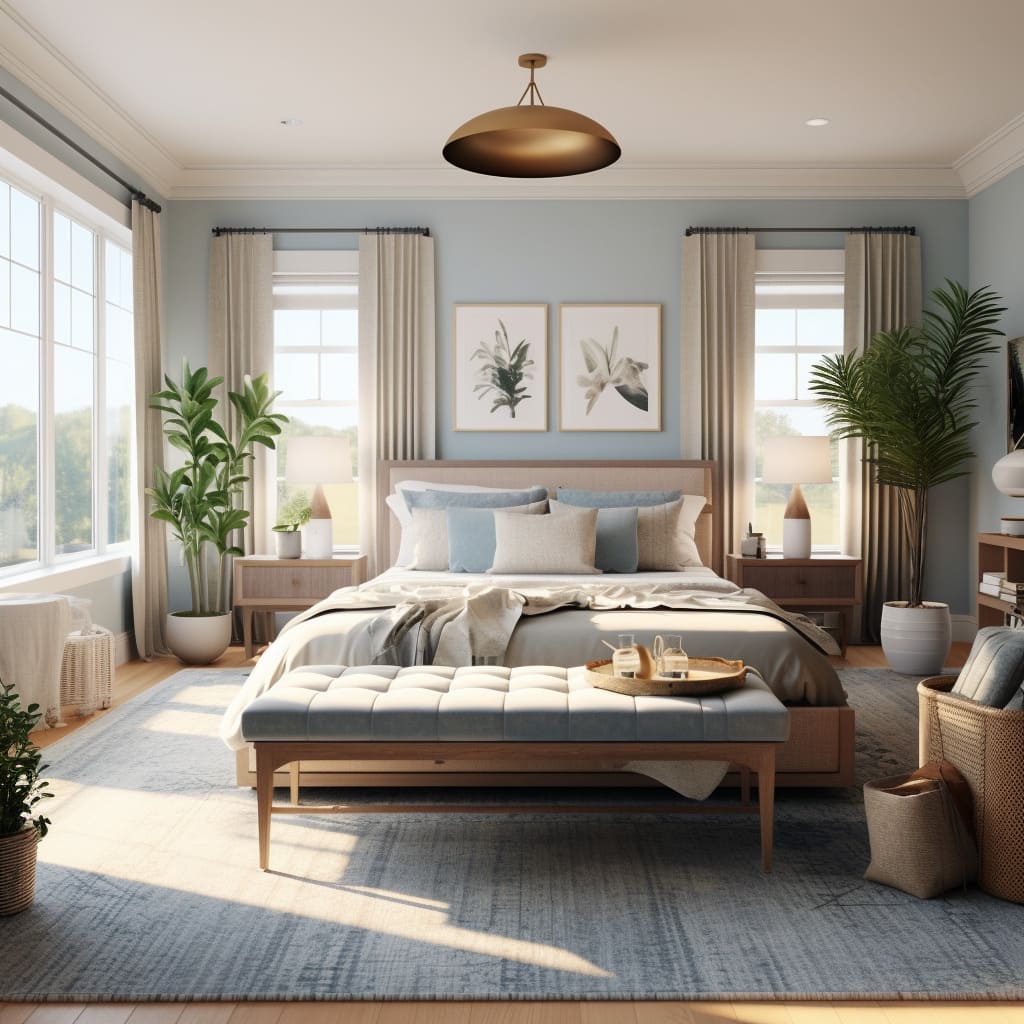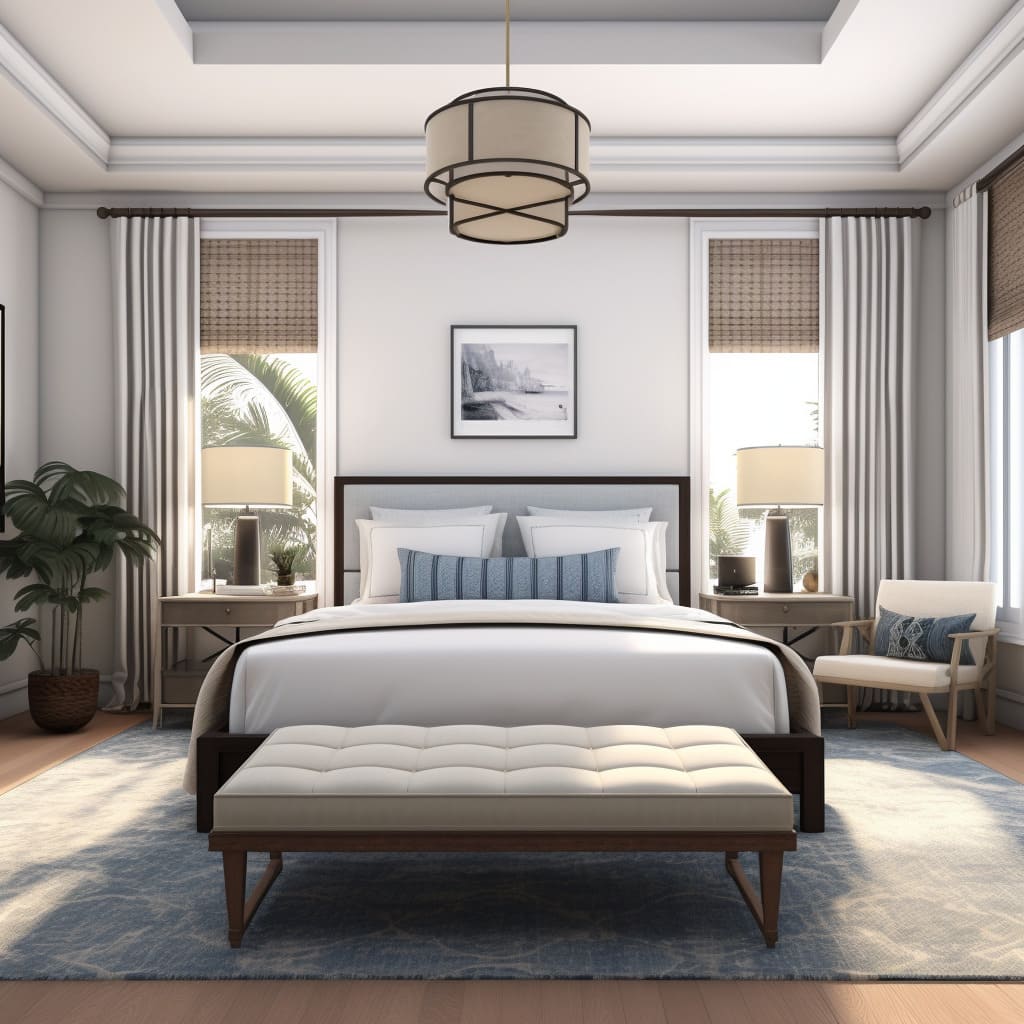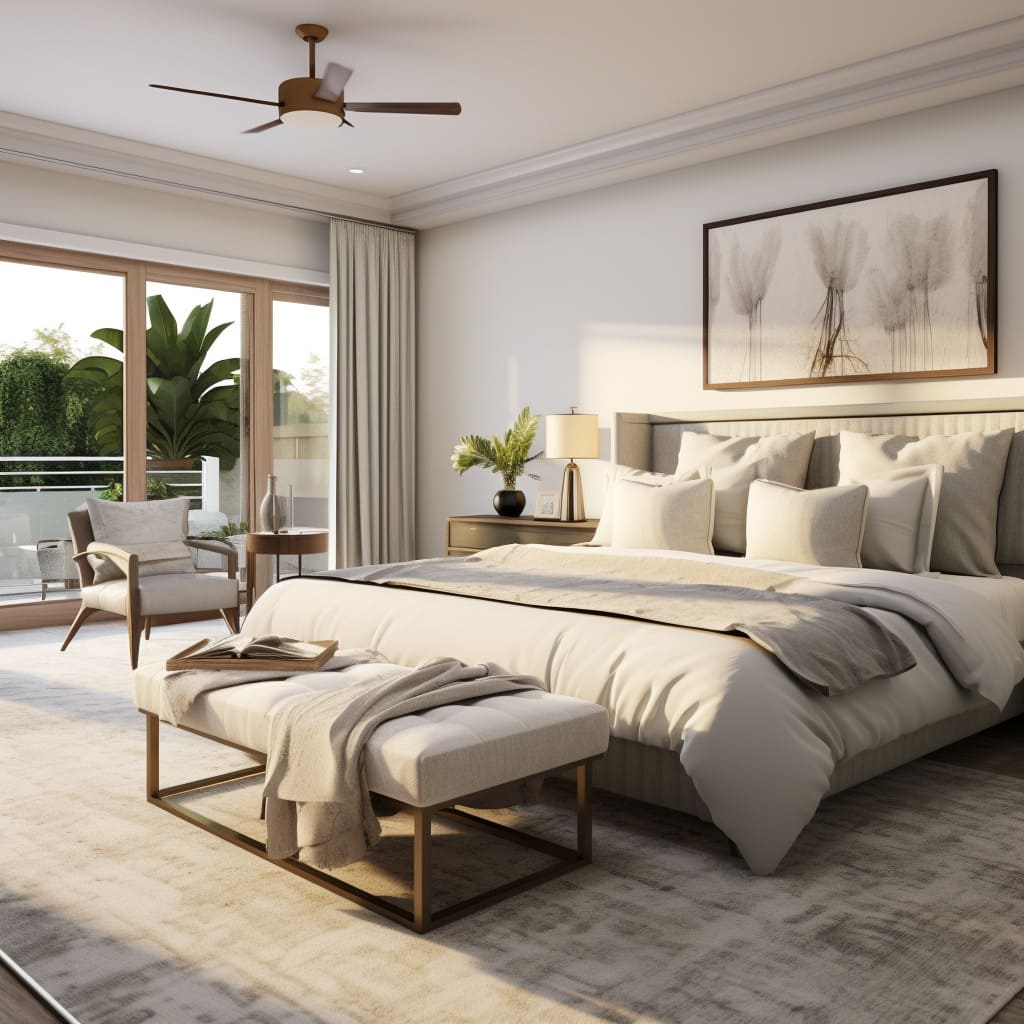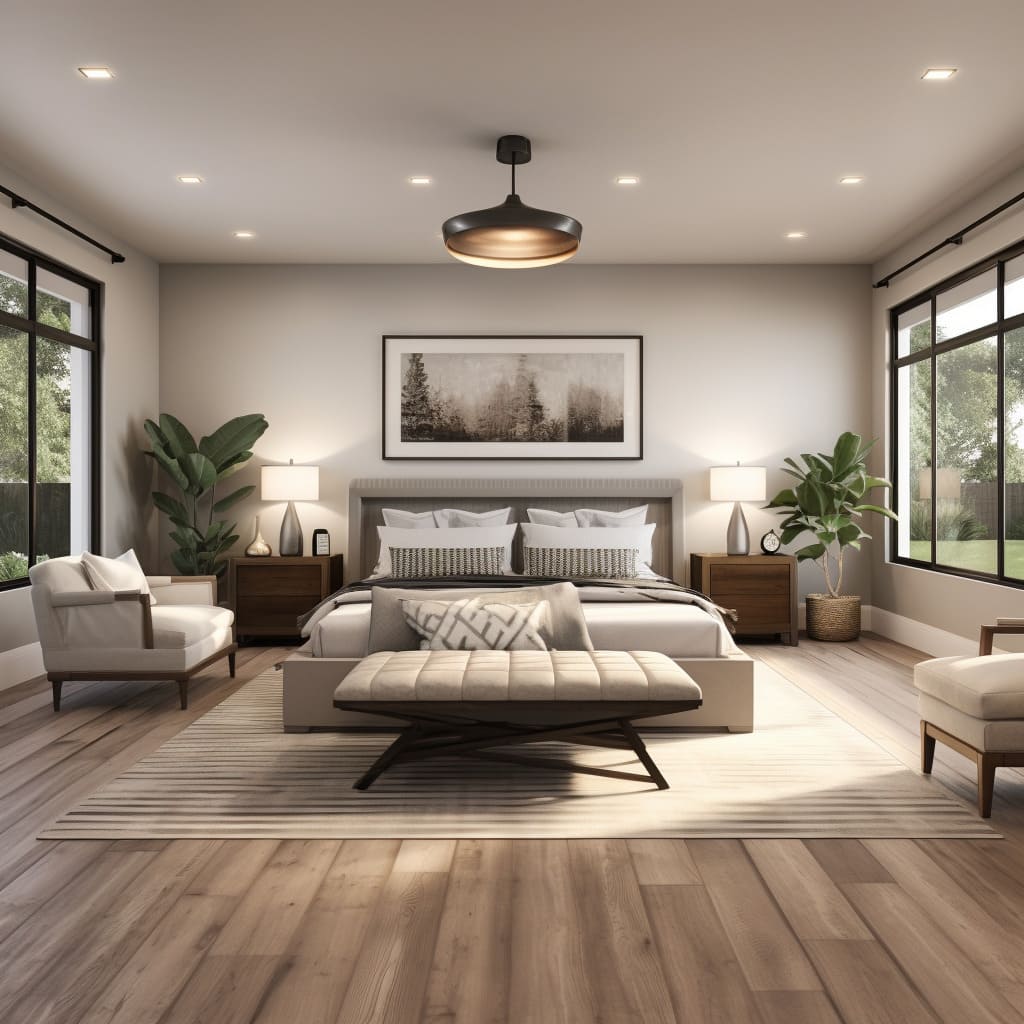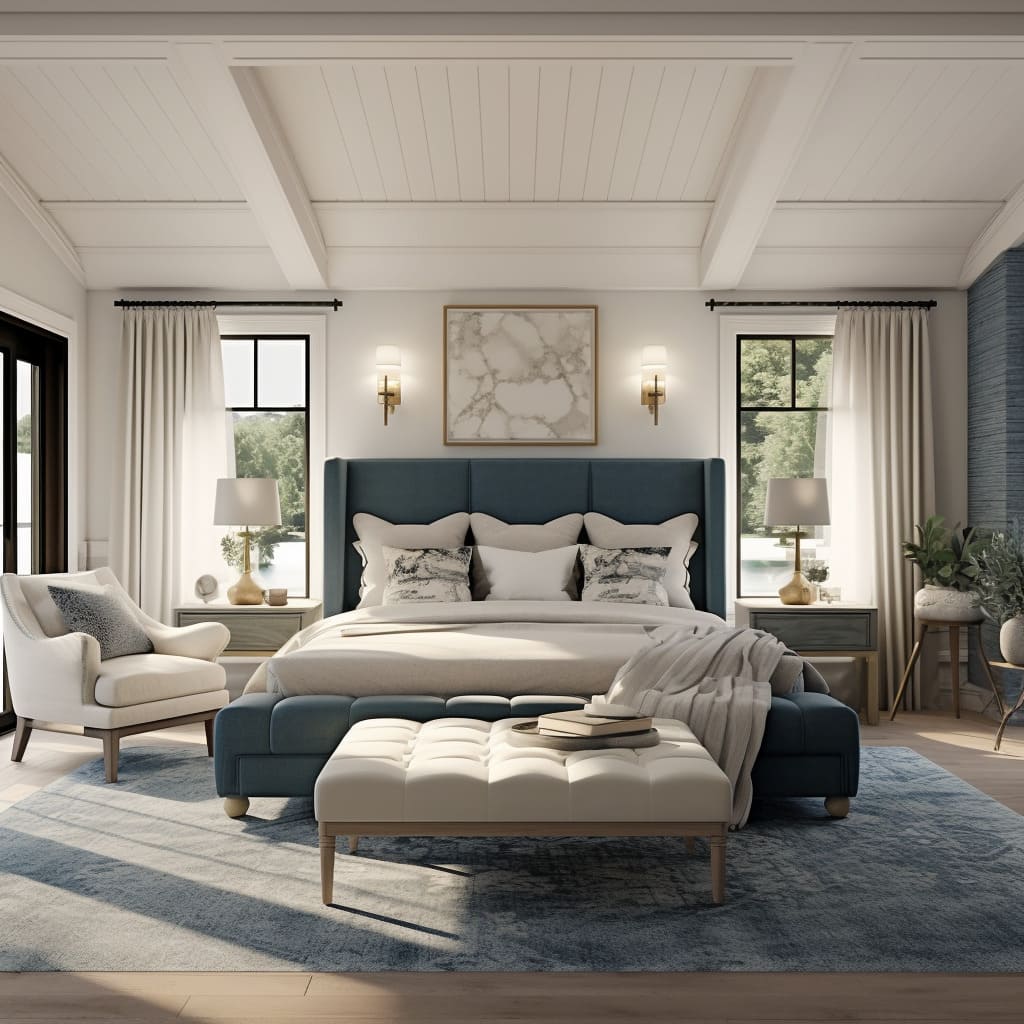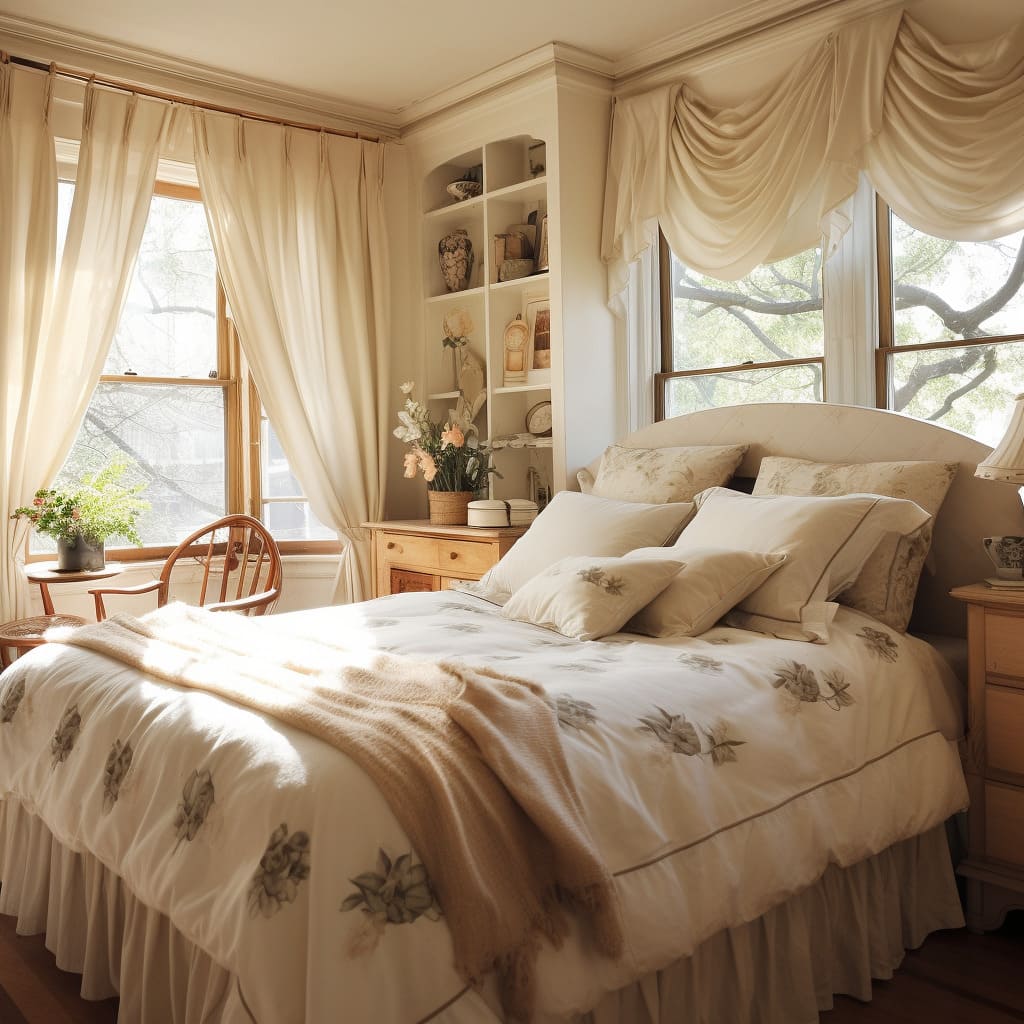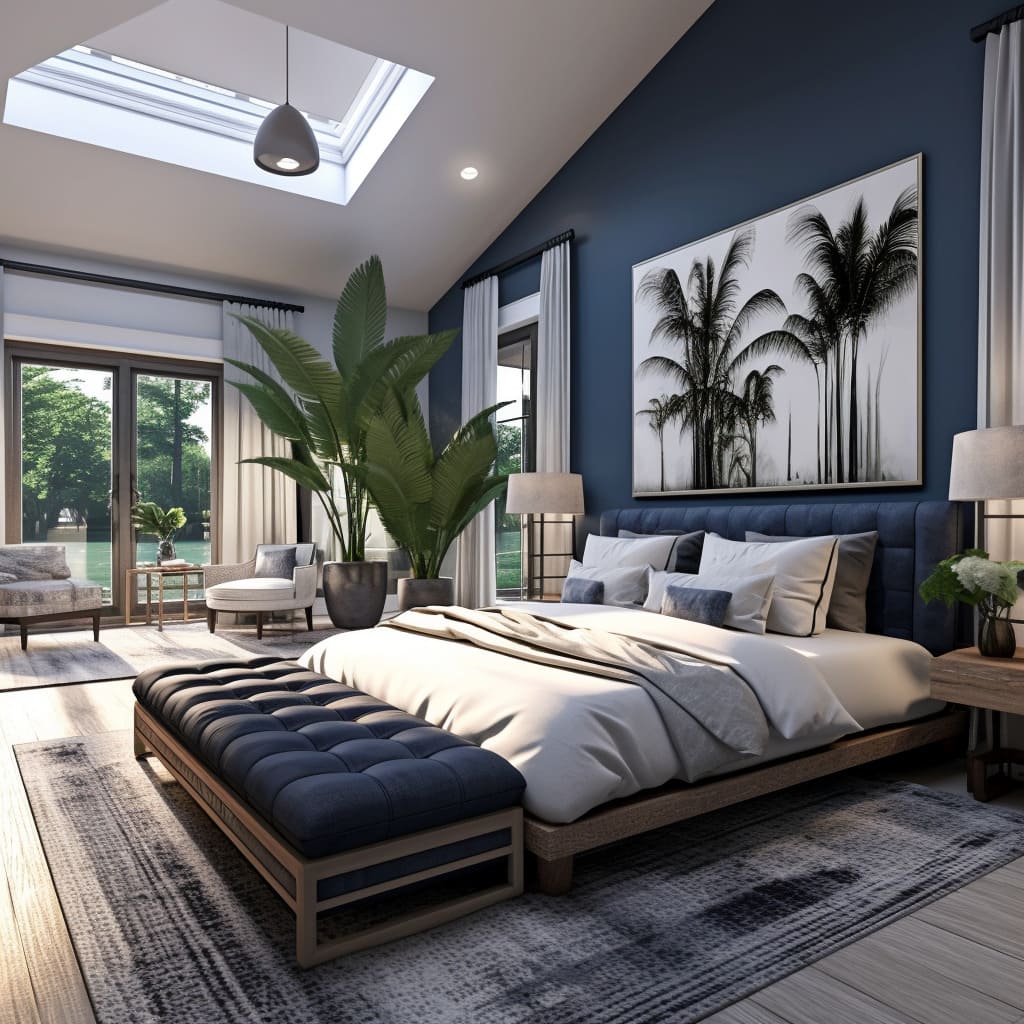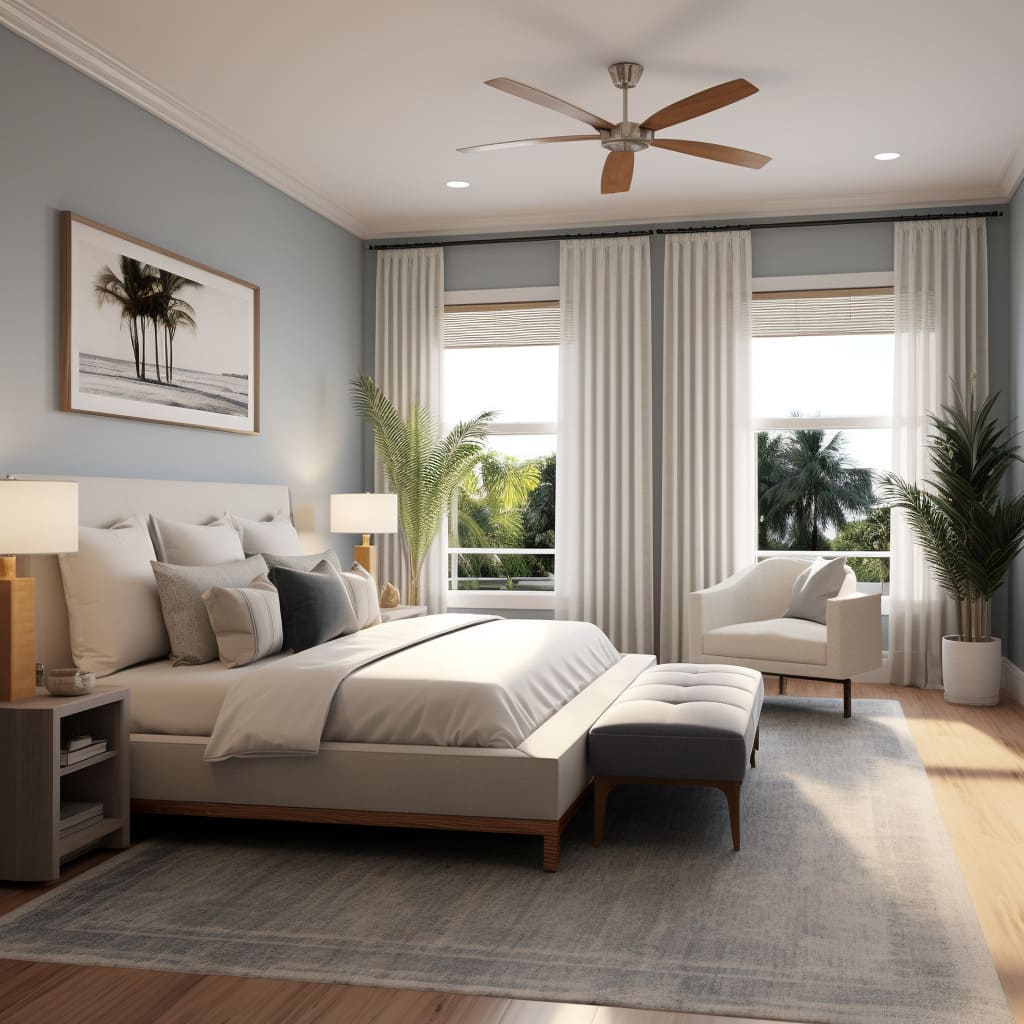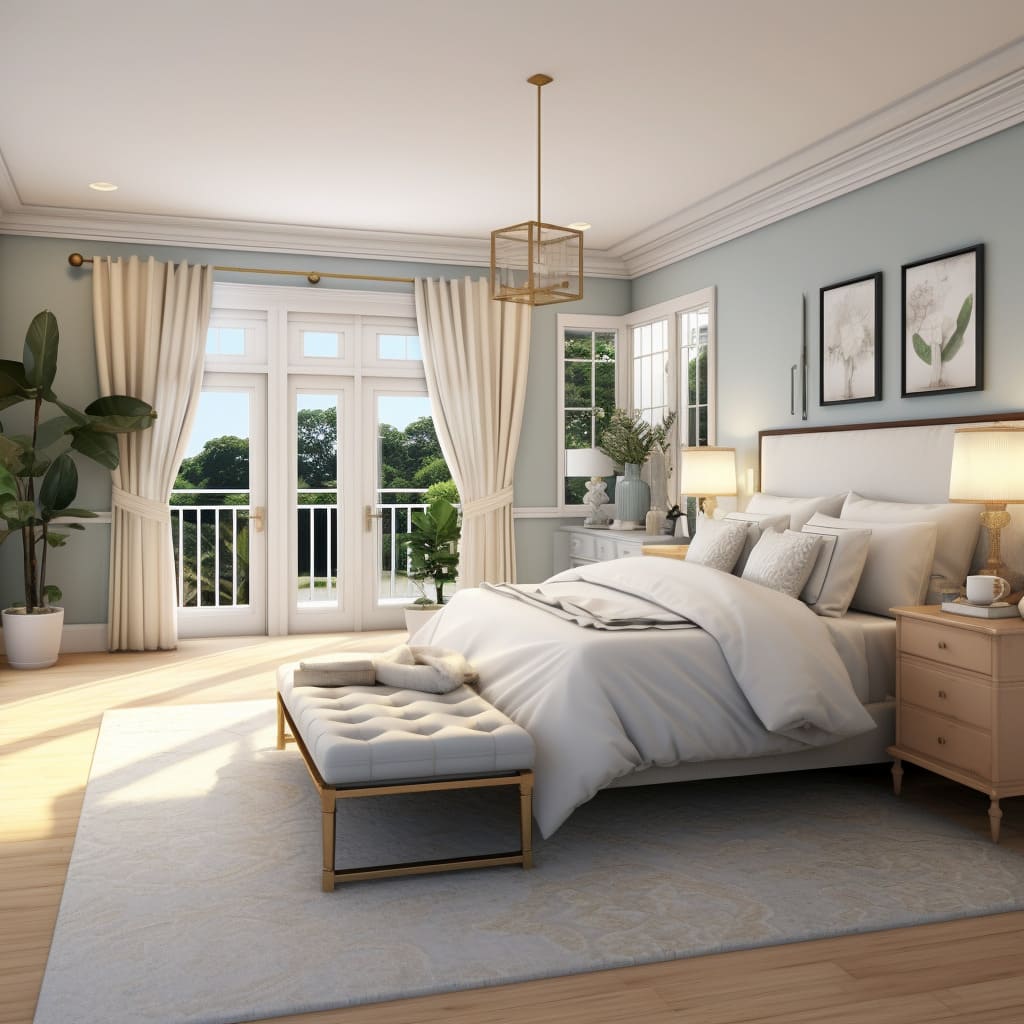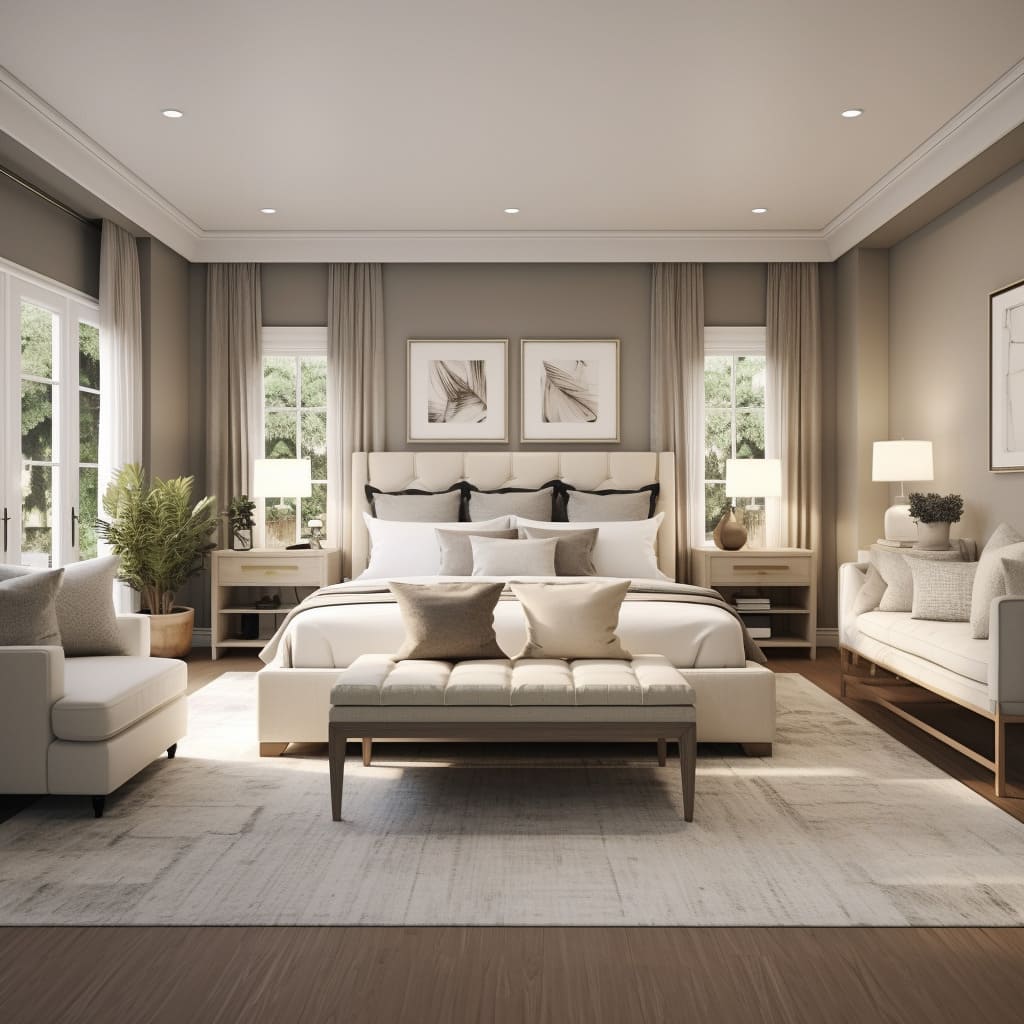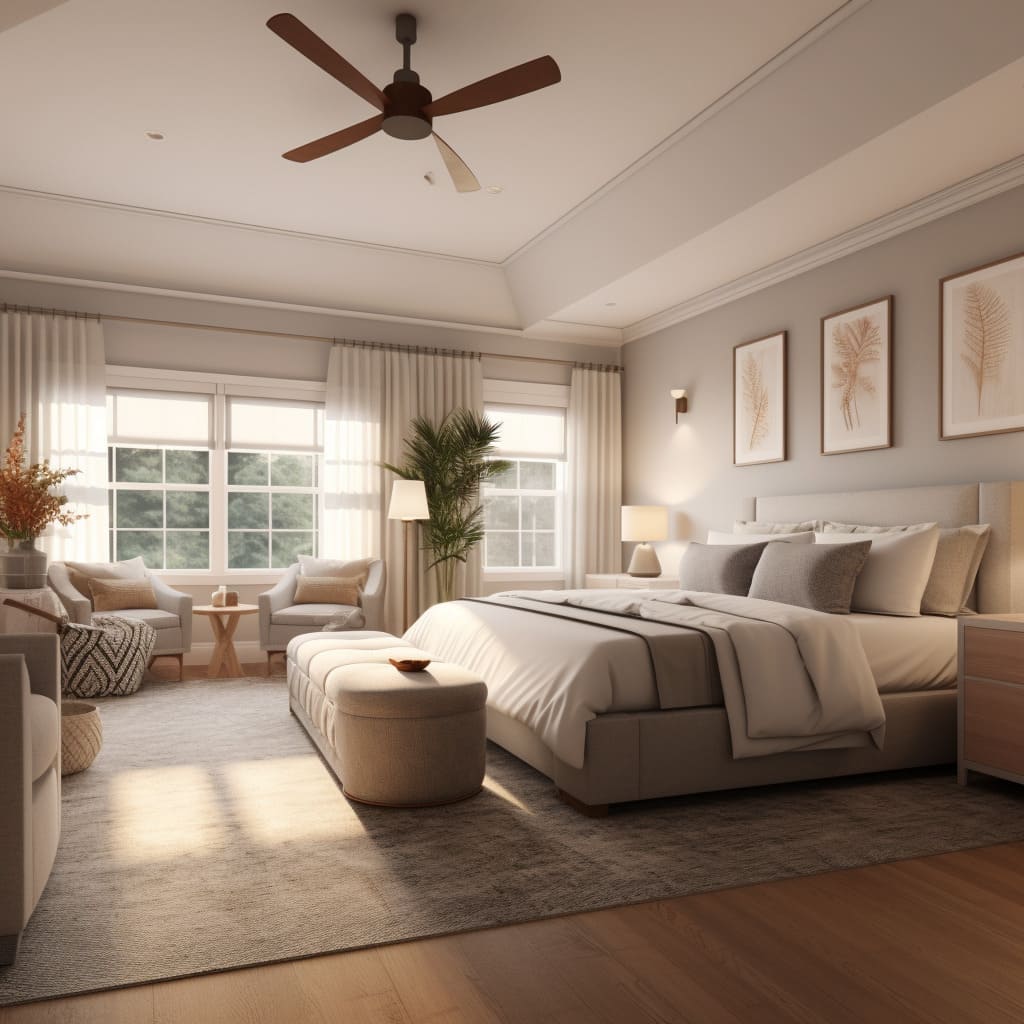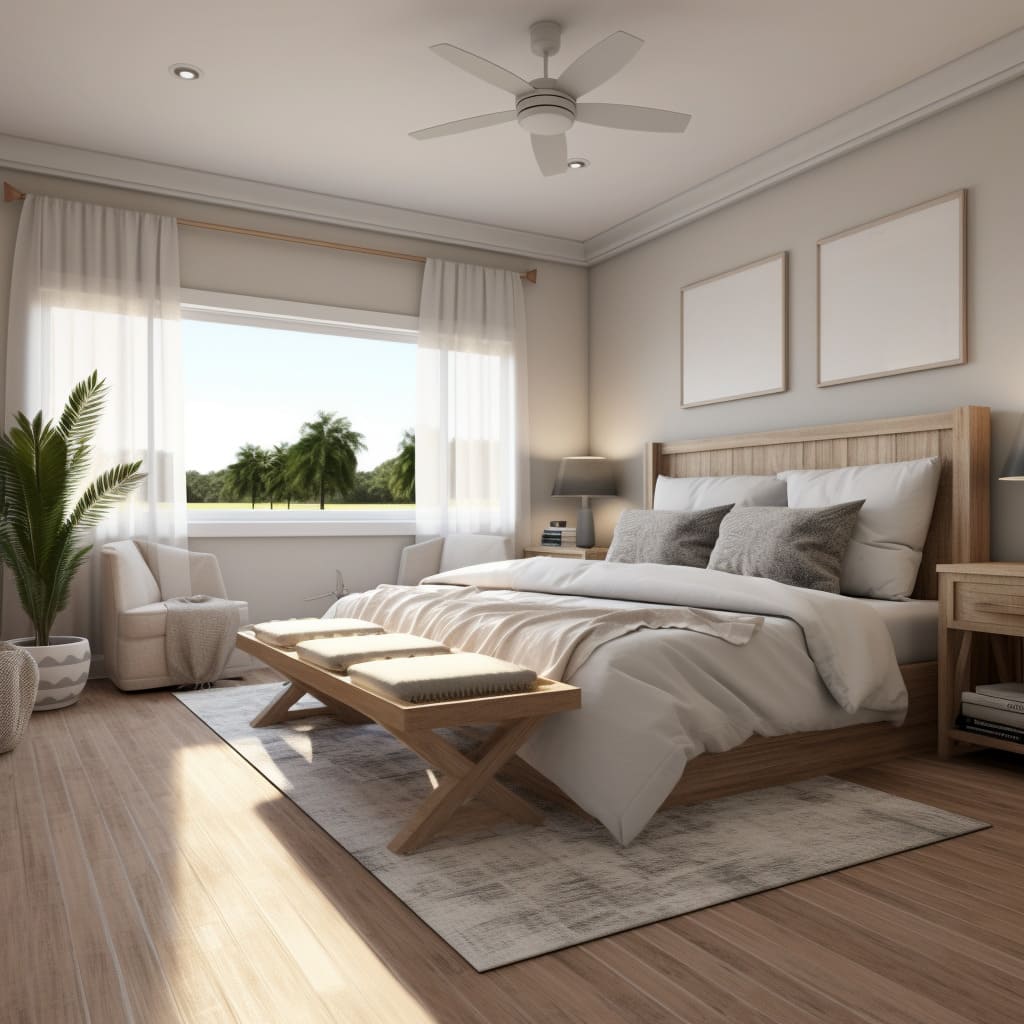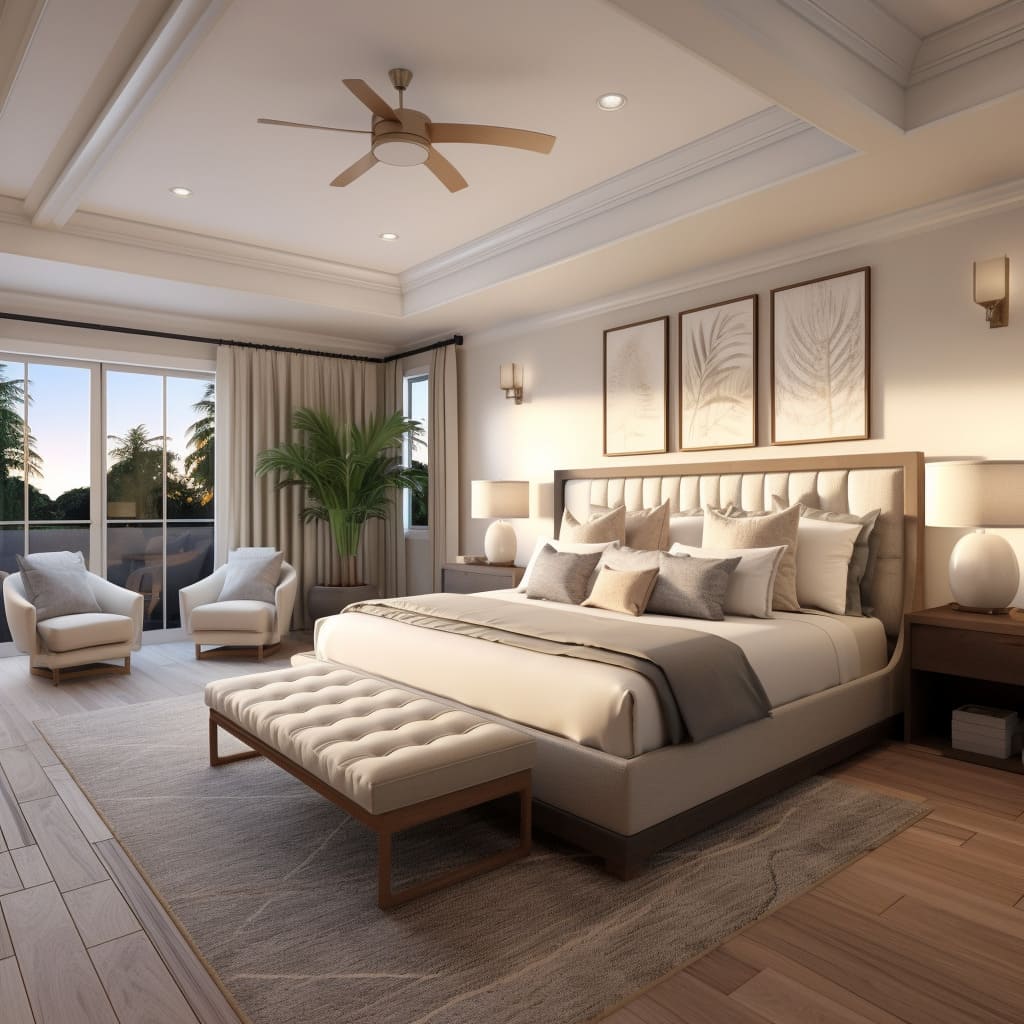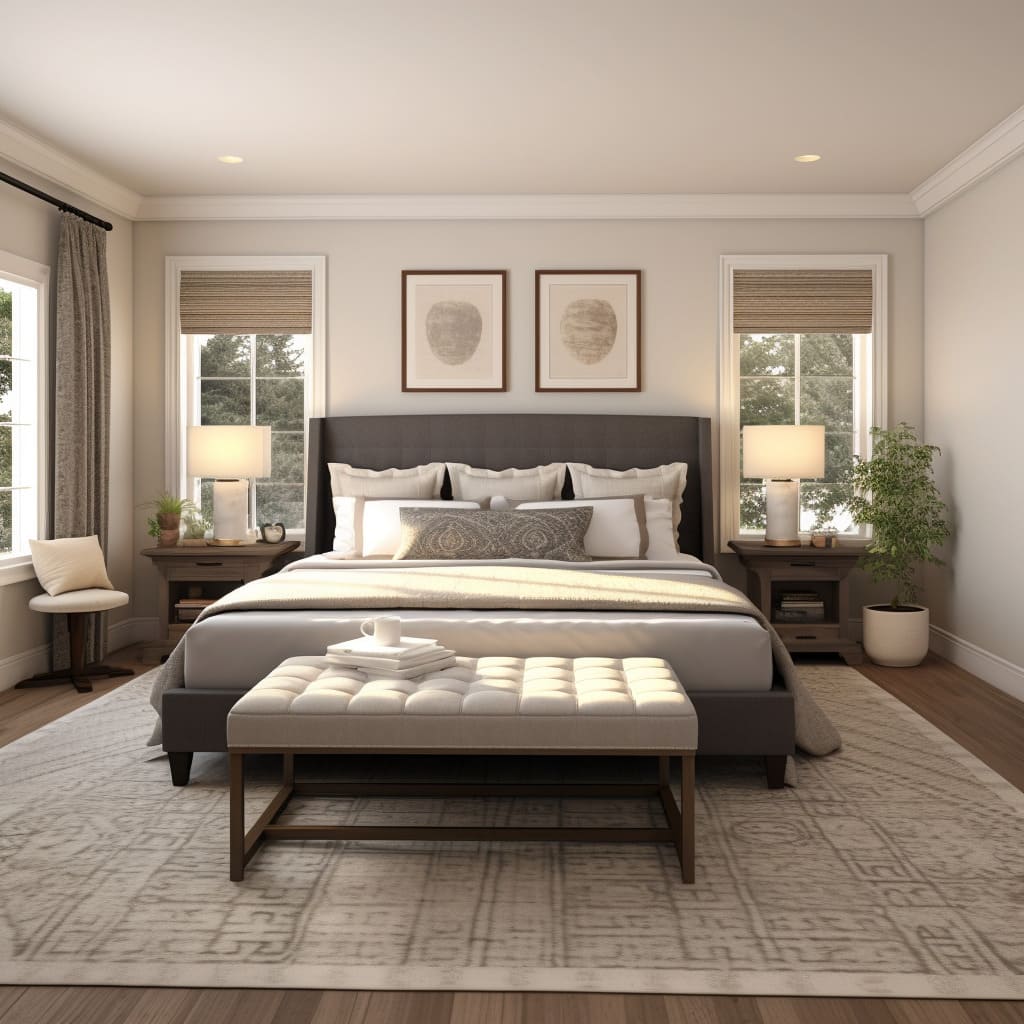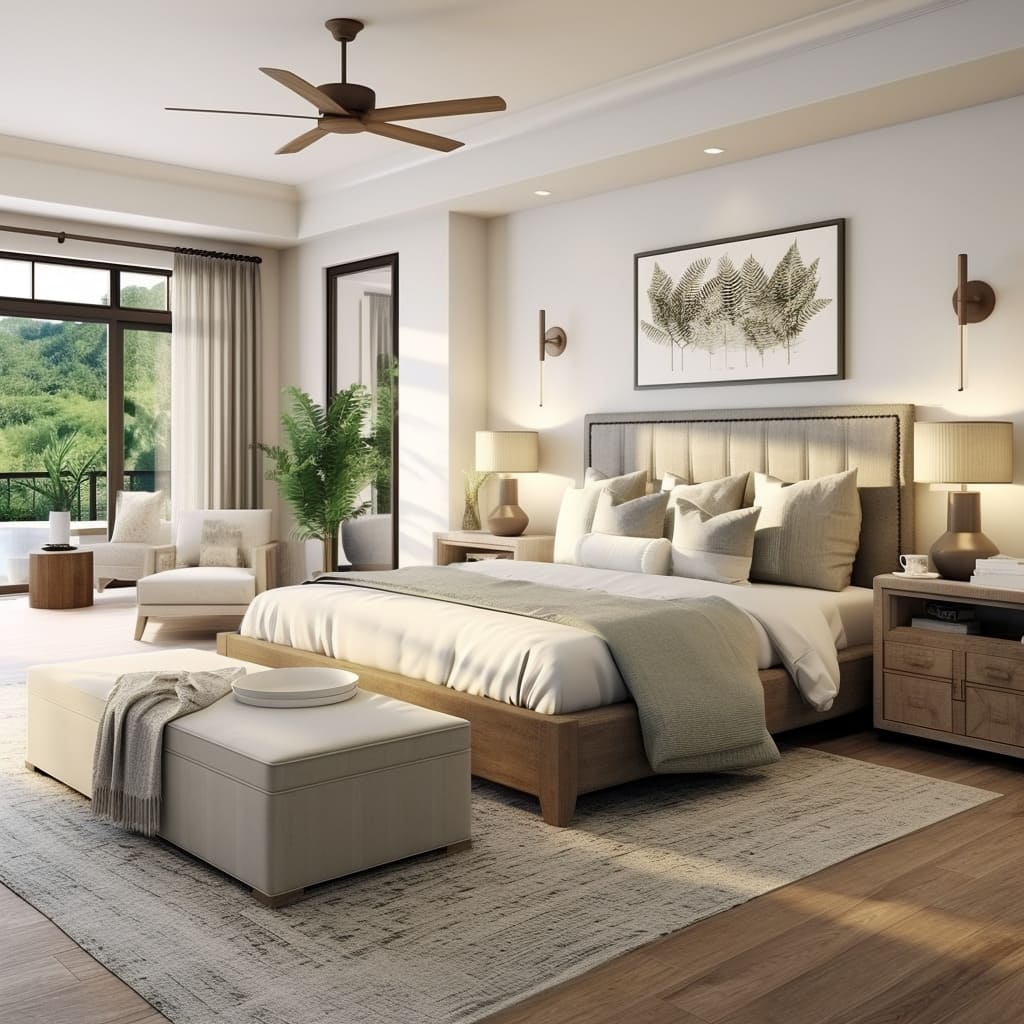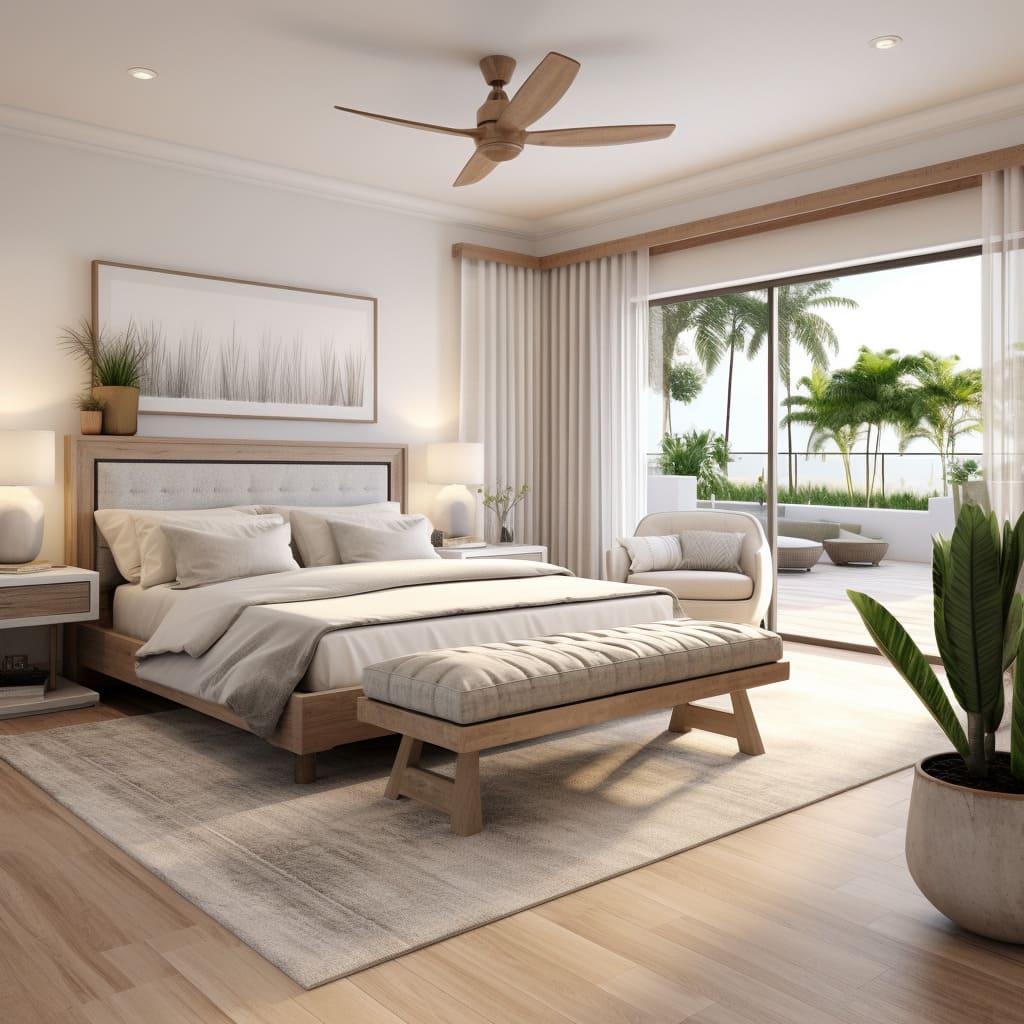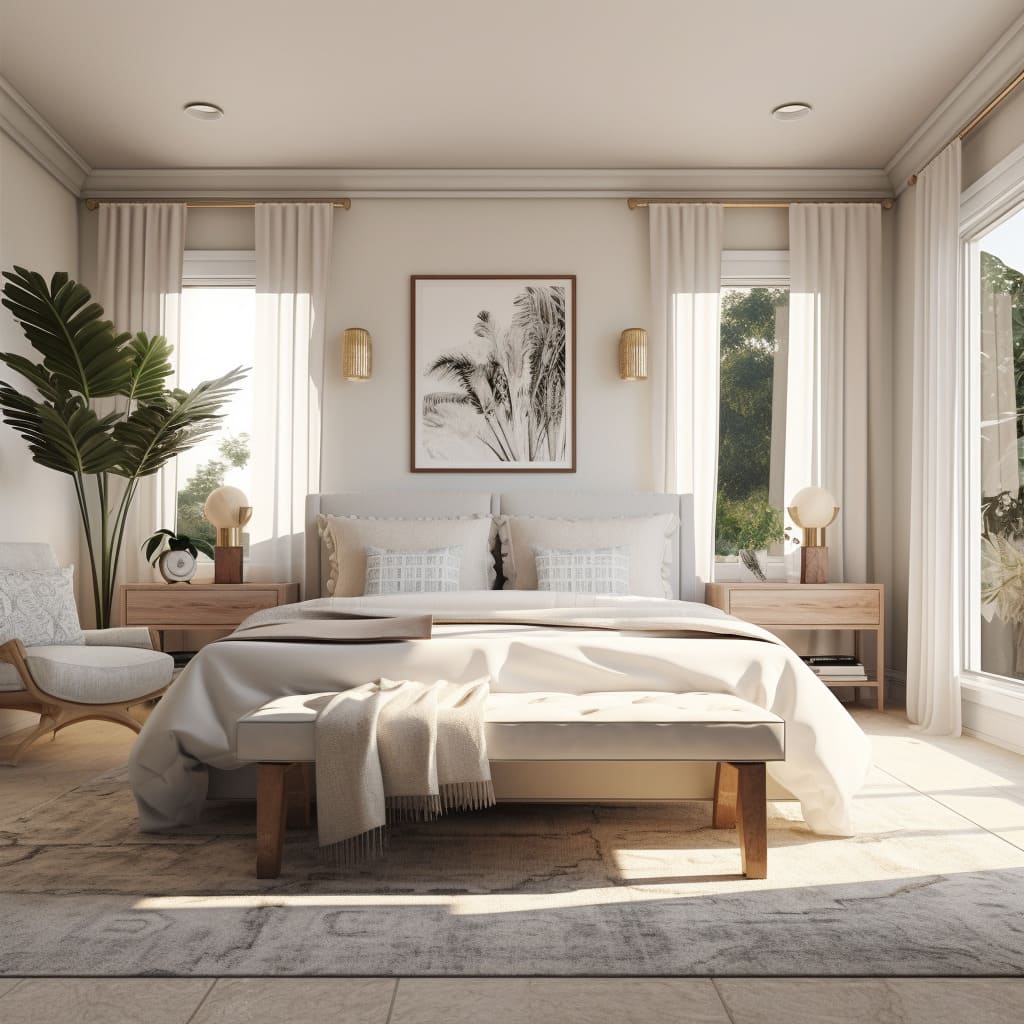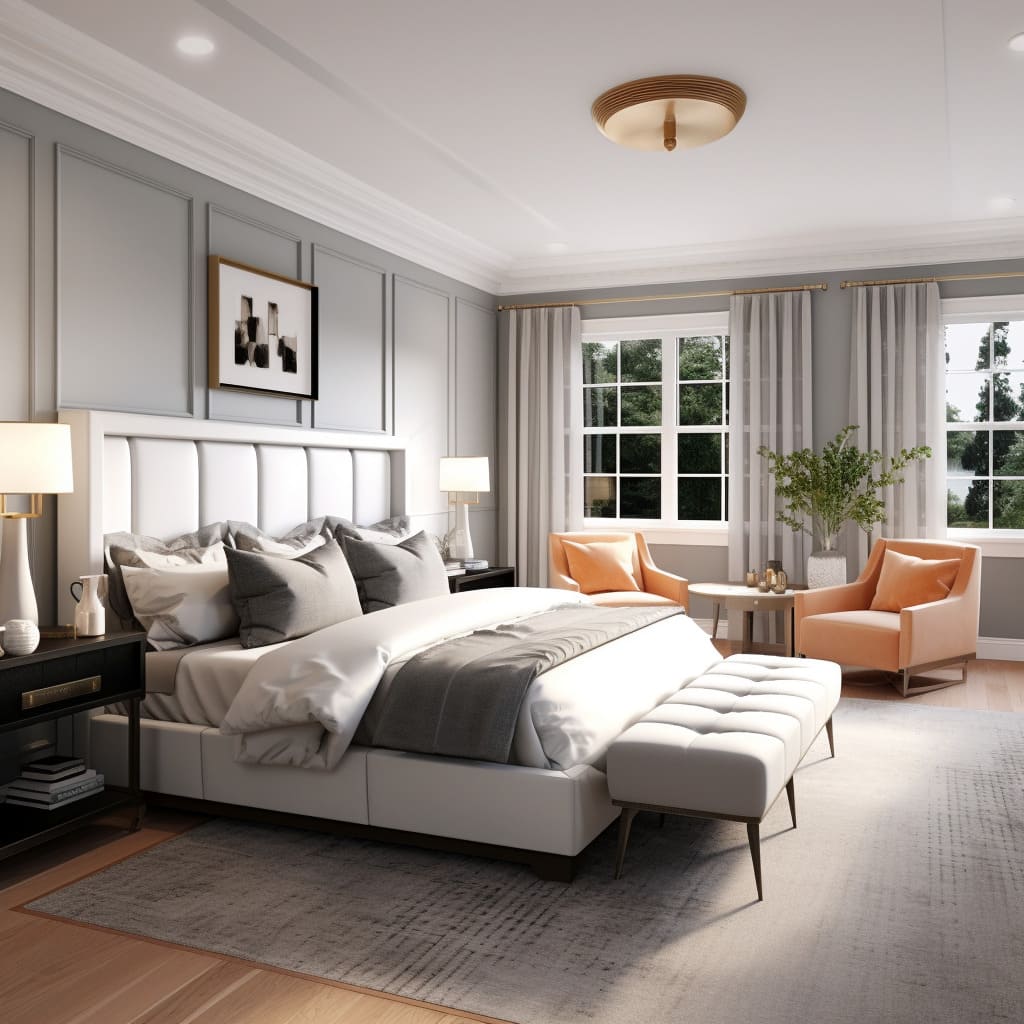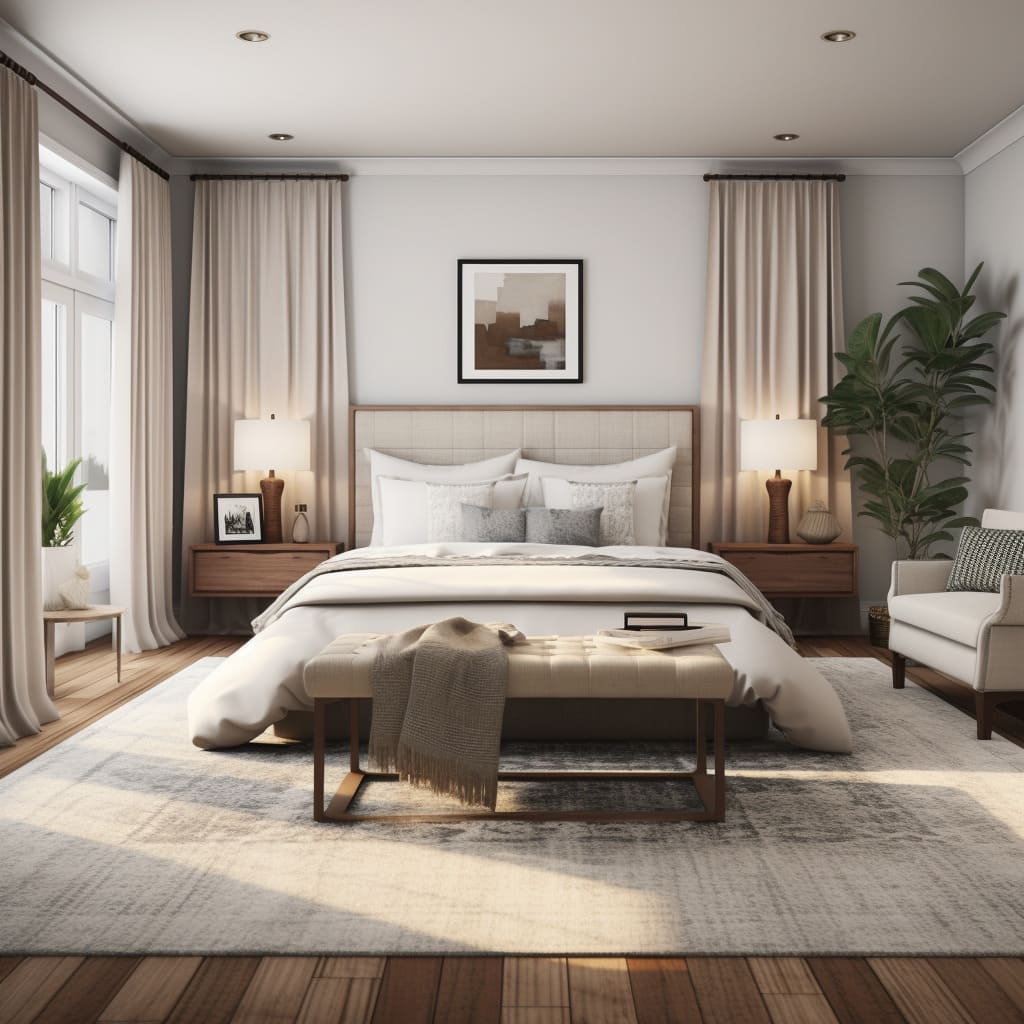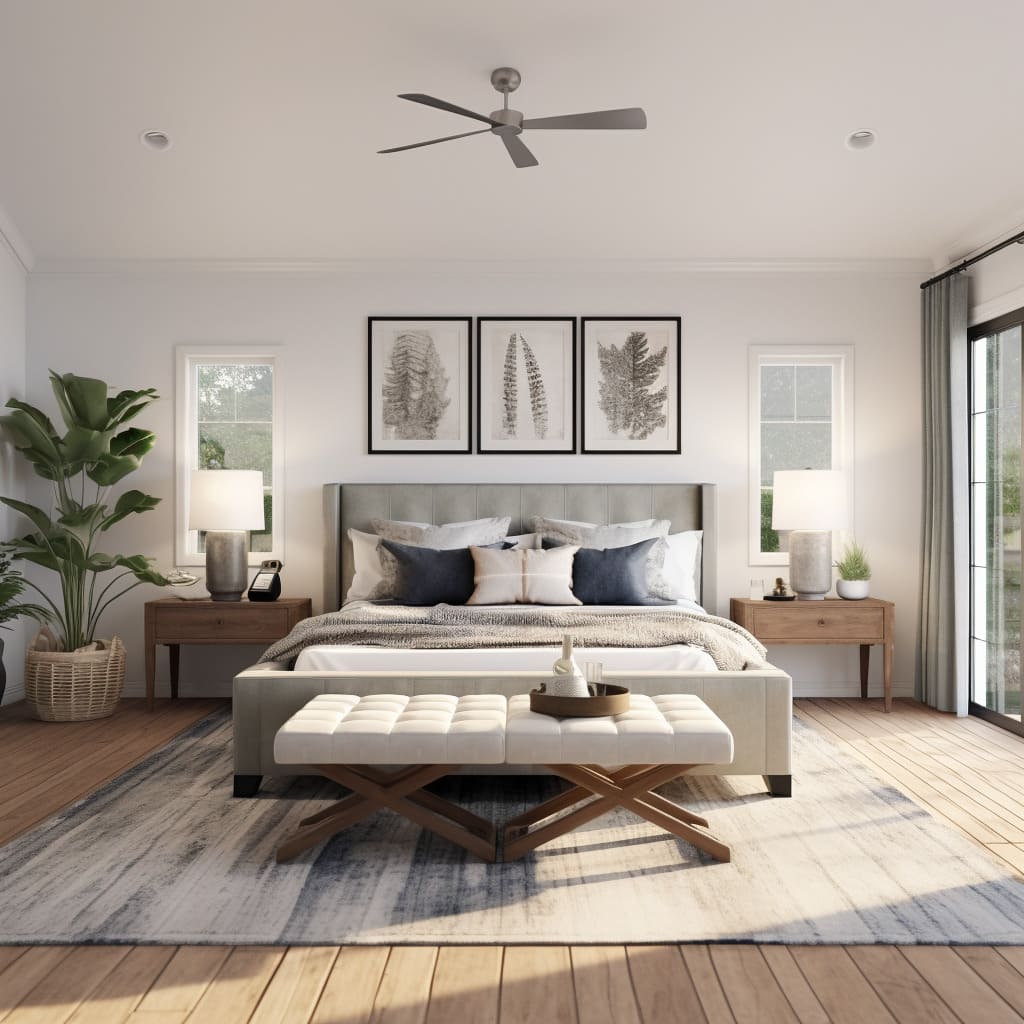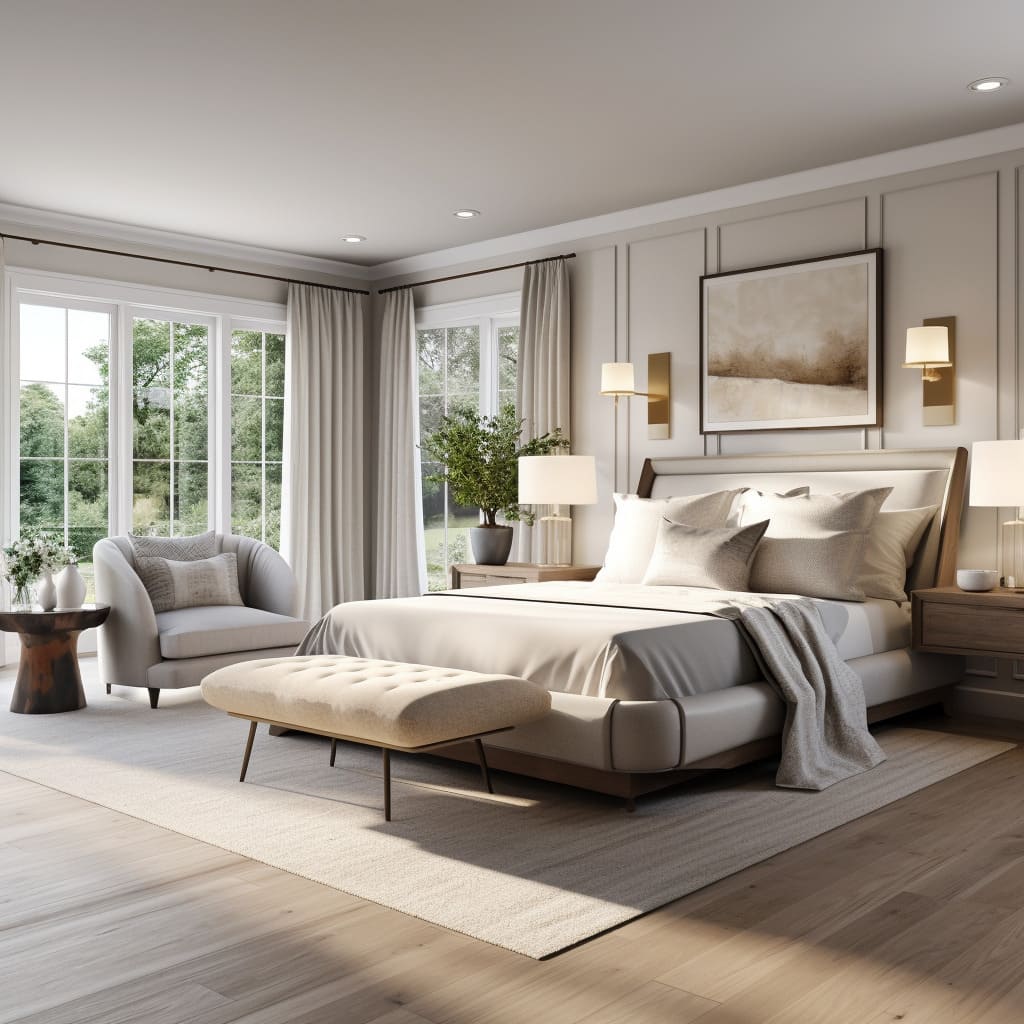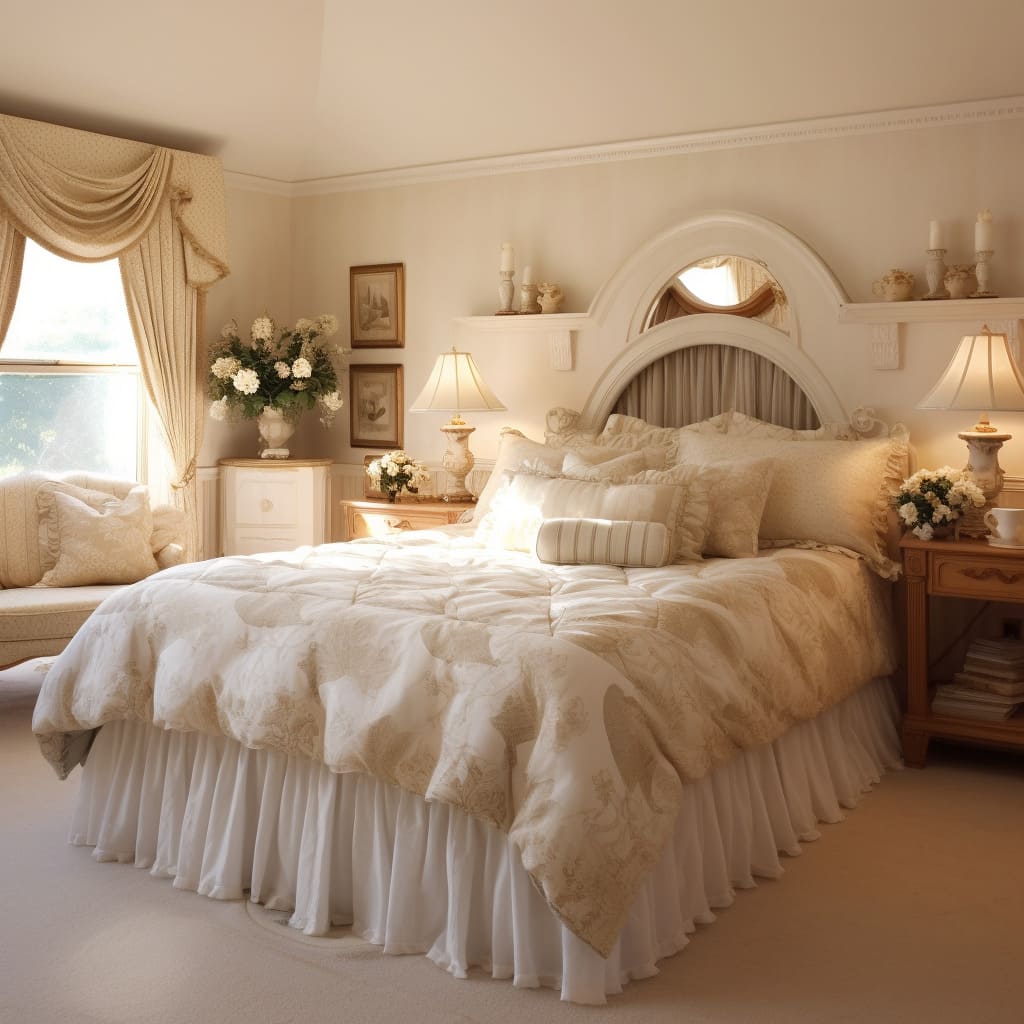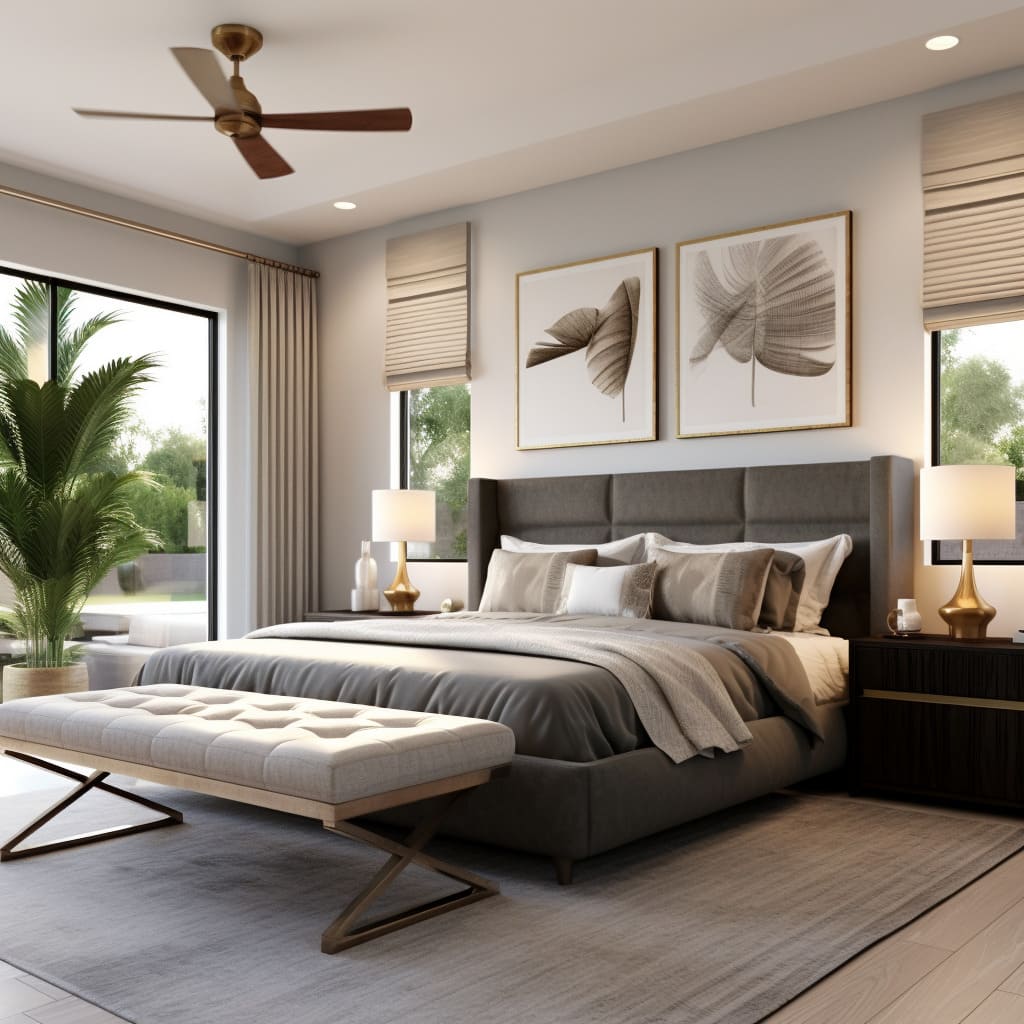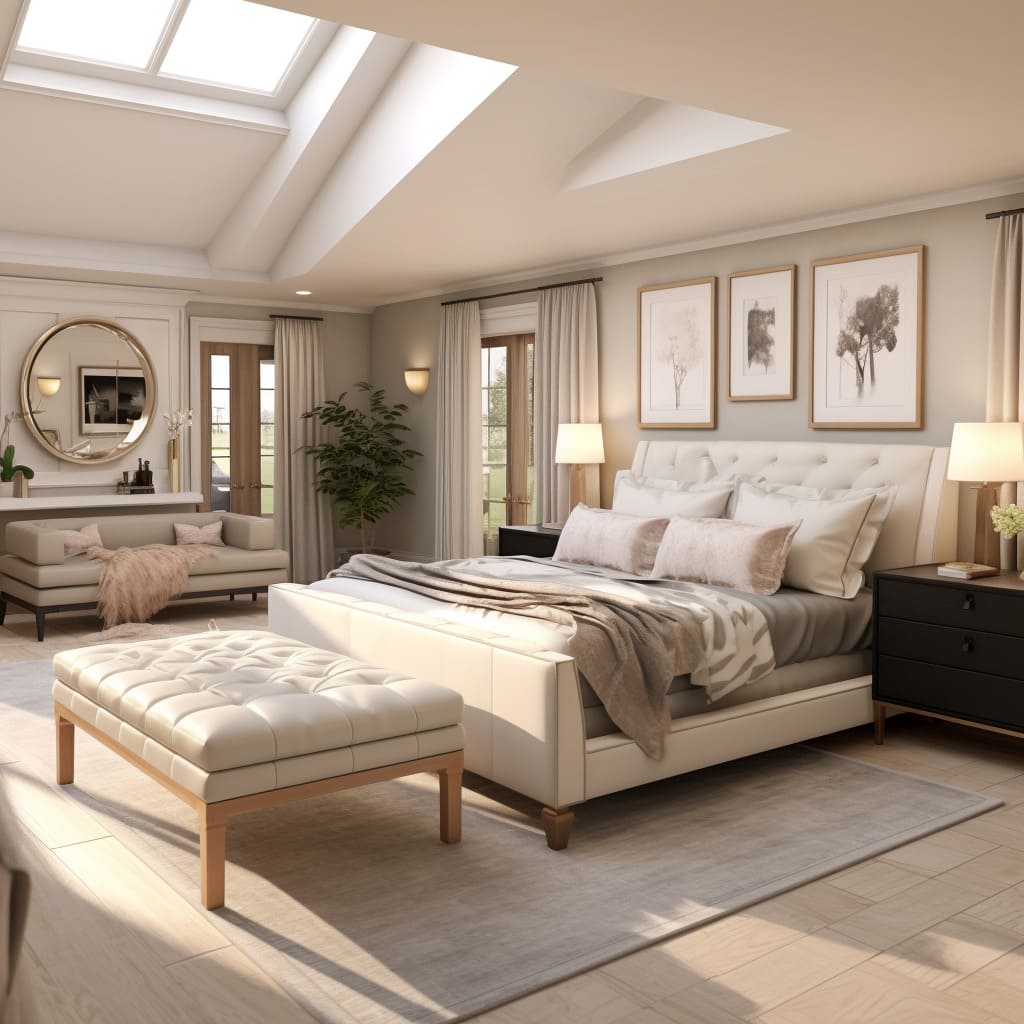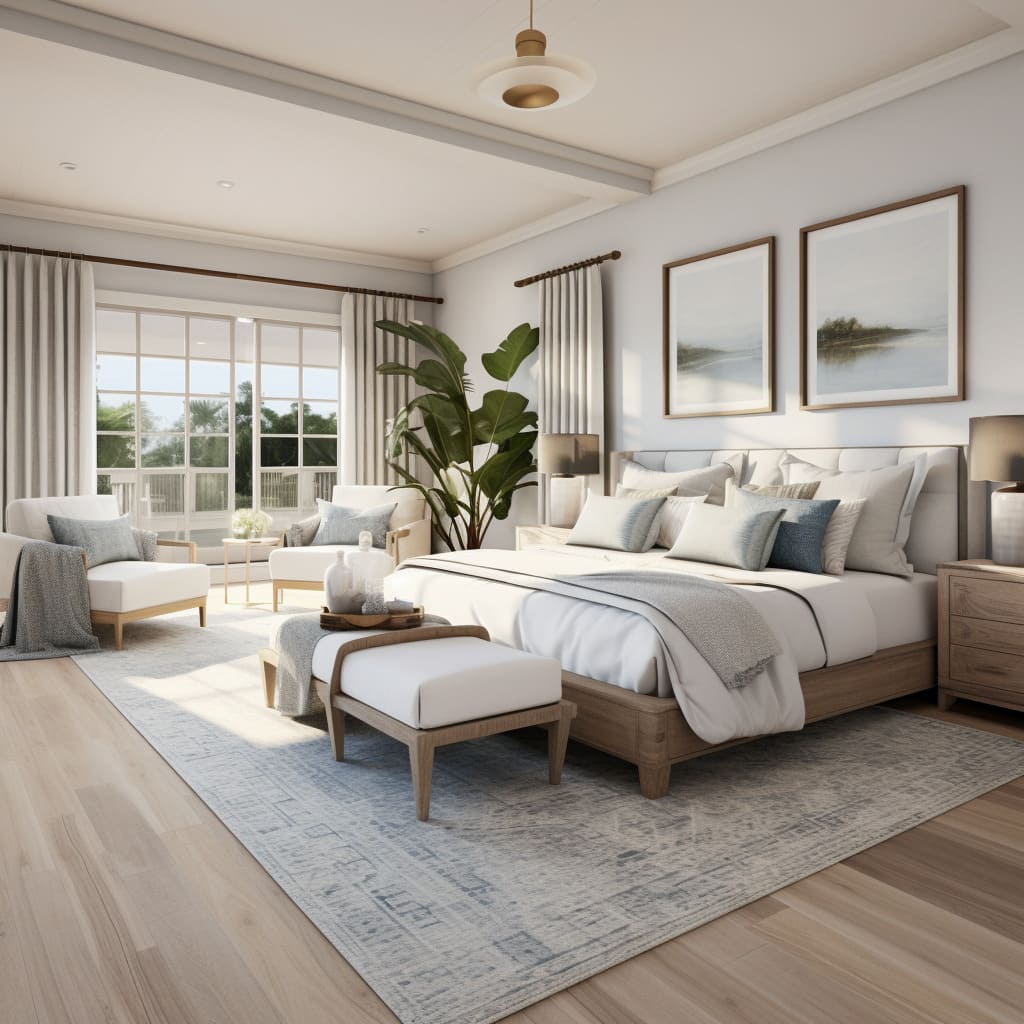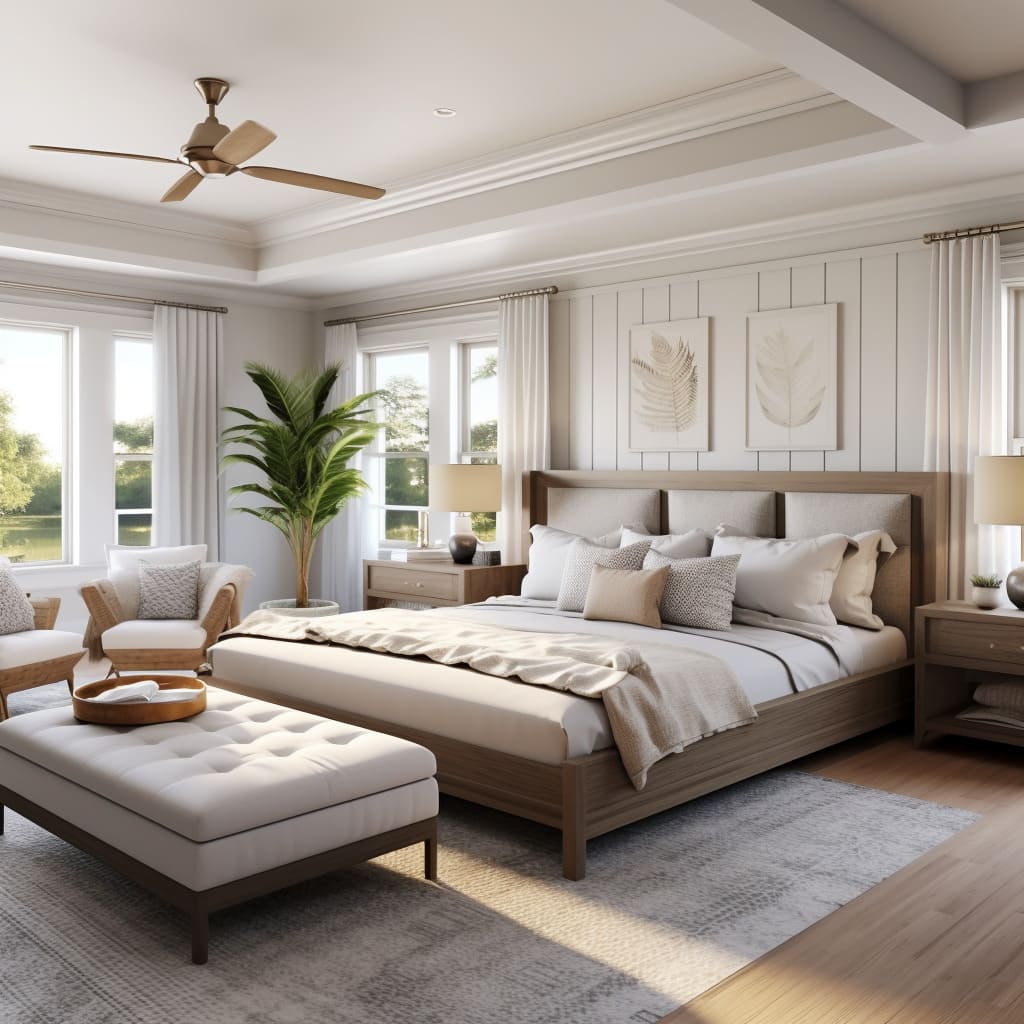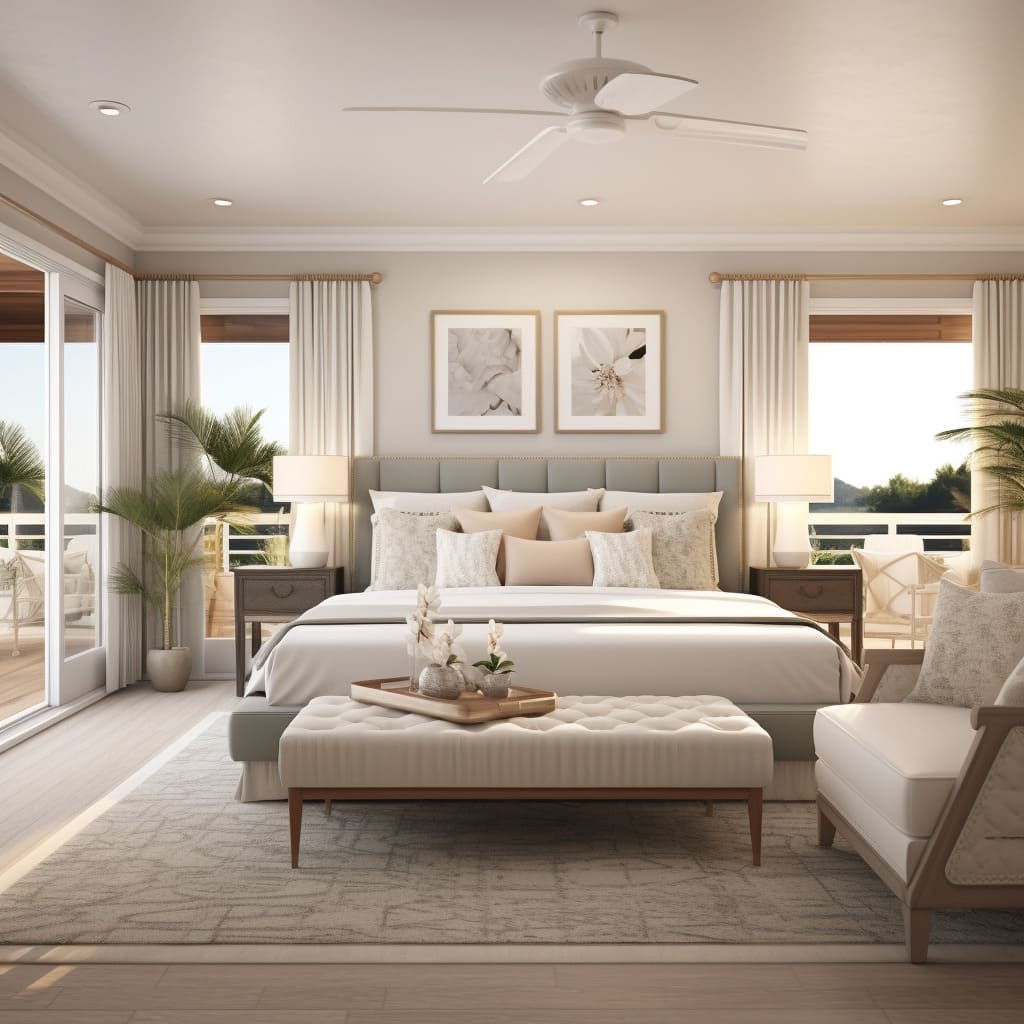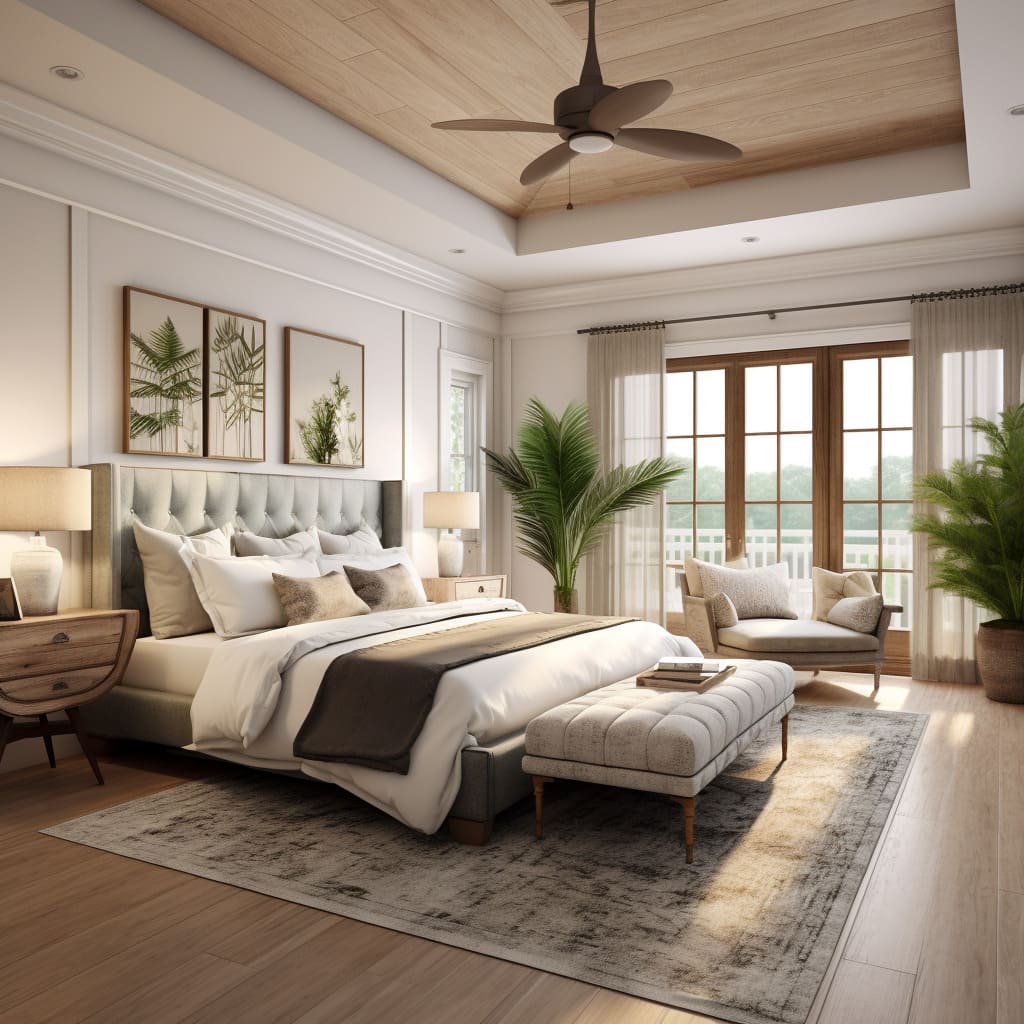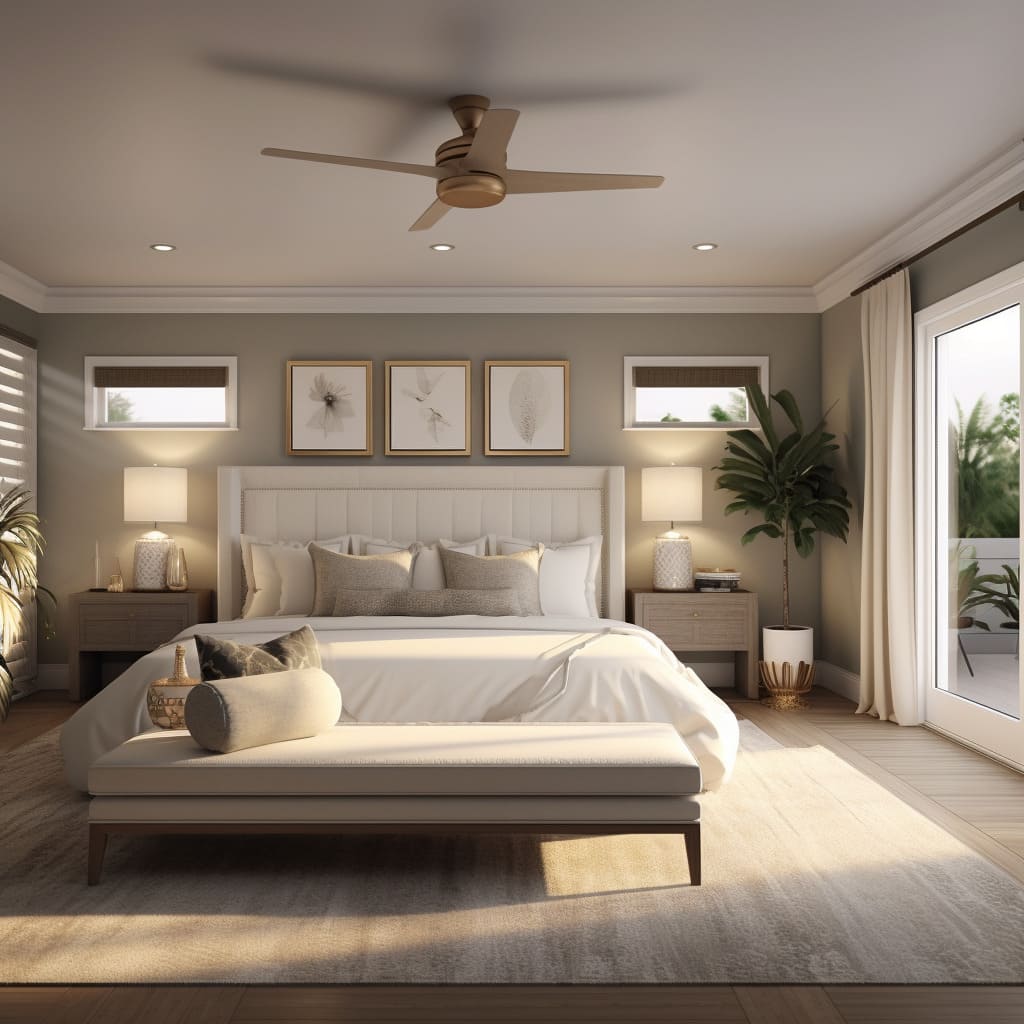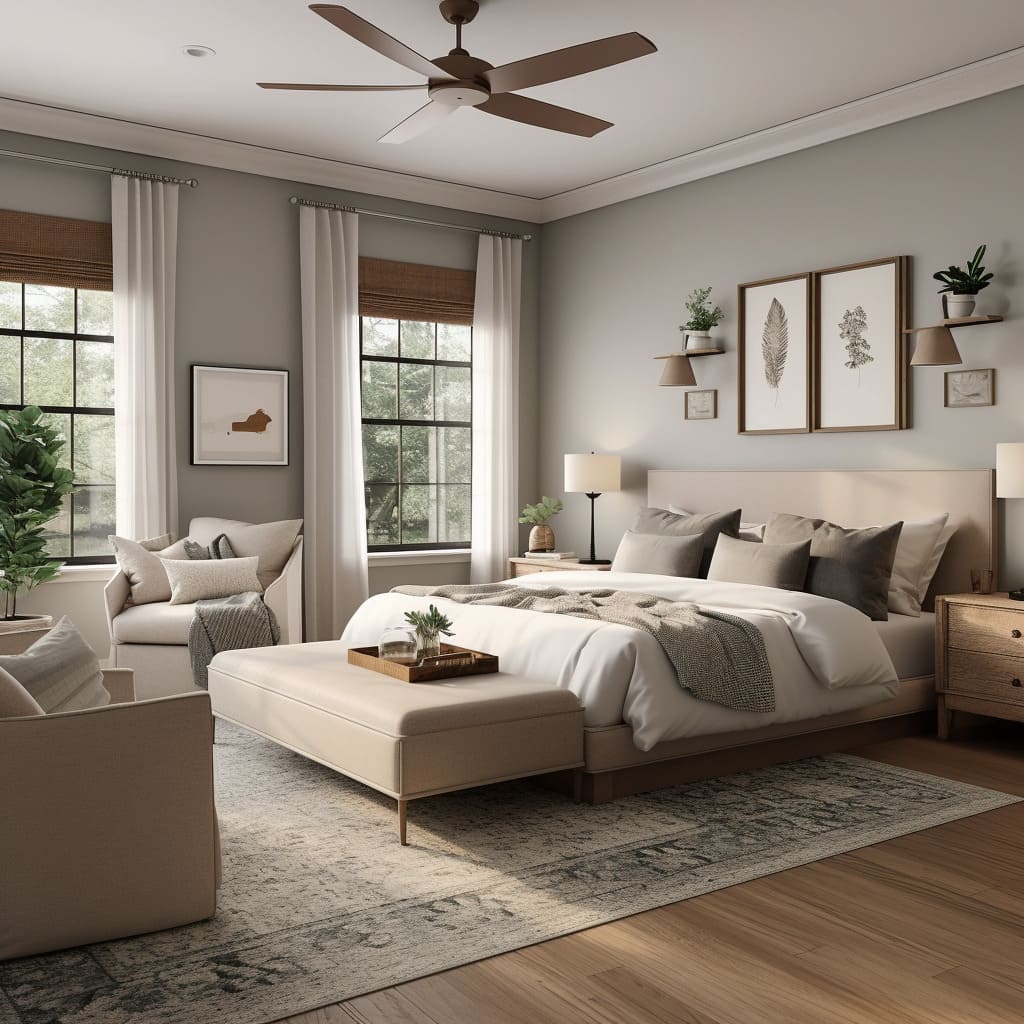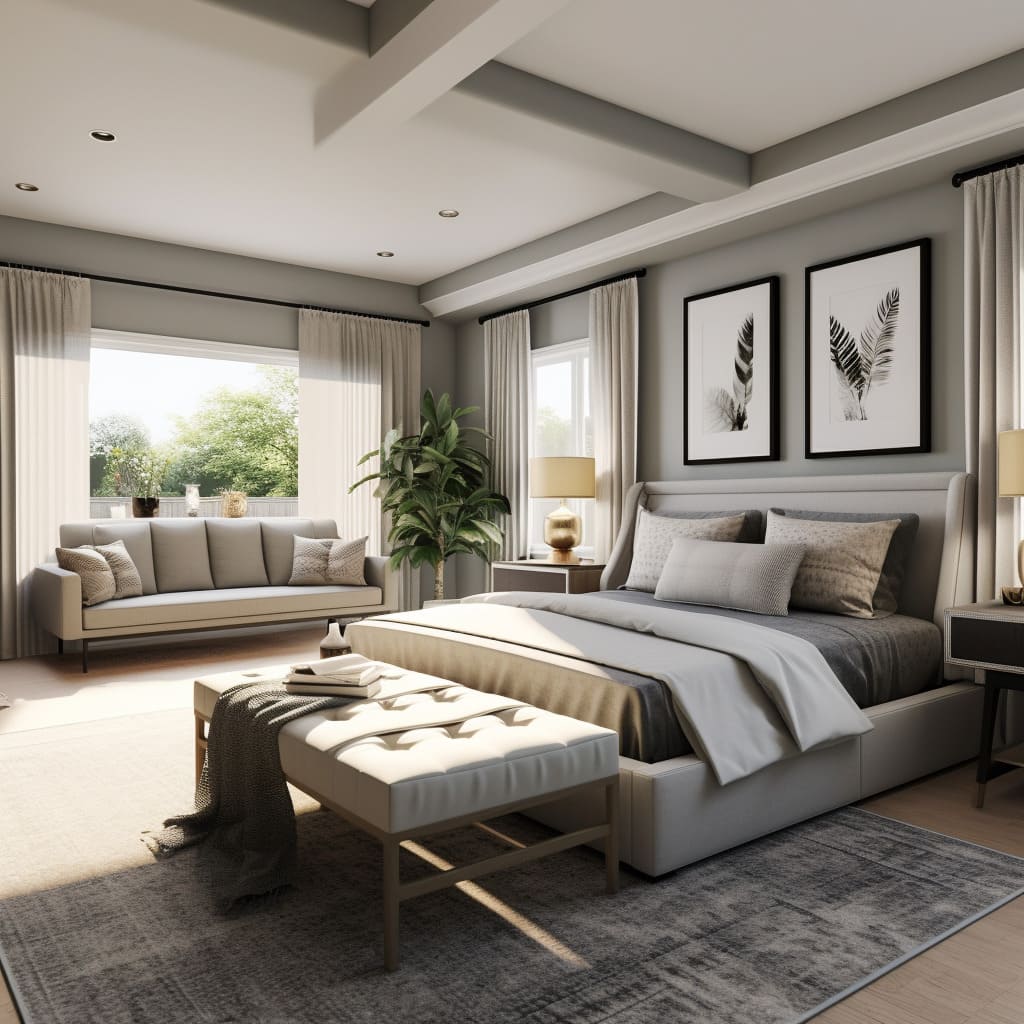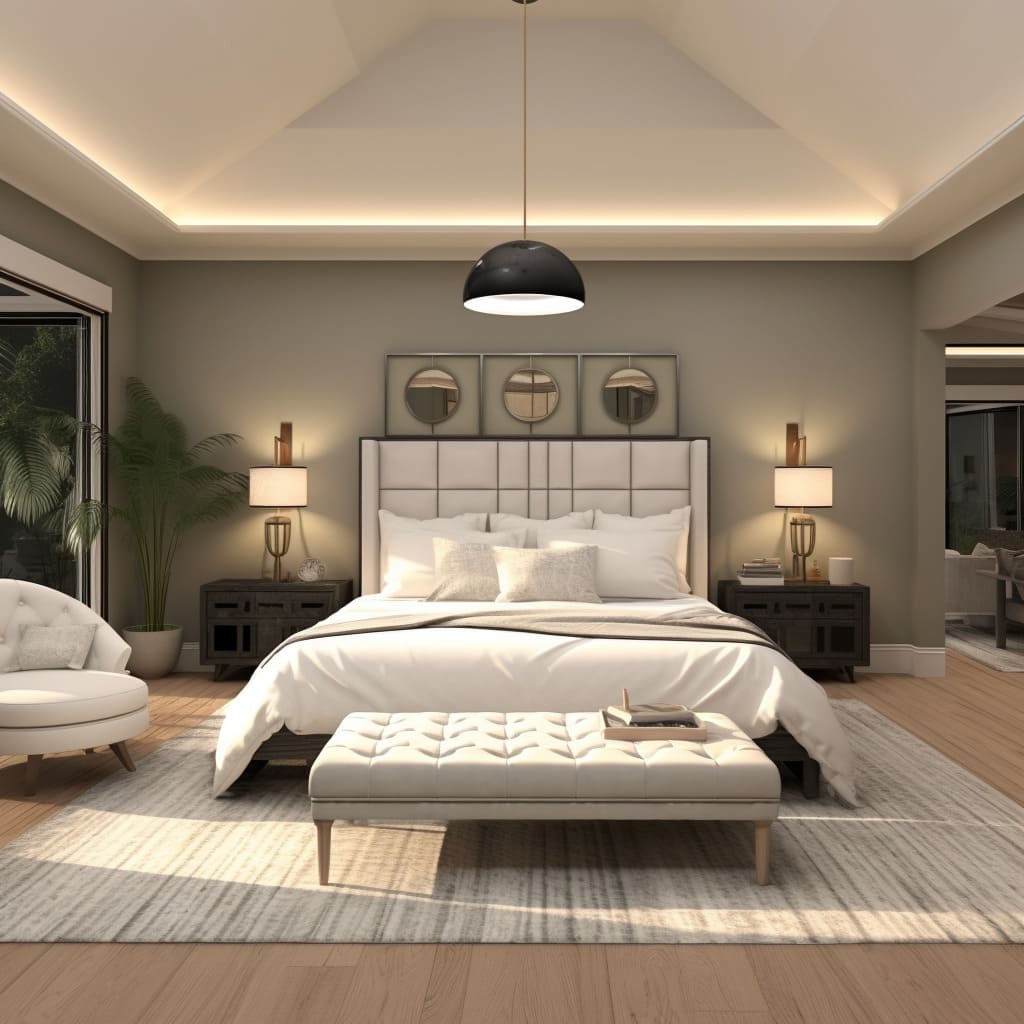This article delves into the intricacies of bedroom interior design, highlighting key features that transform these intimate spaces into harmonious havens. The art of creating a serene bedroom environment involves more than just aesthetic appeal; it’s about fostering a space where relaxation and peace are paramount.
From the calming influence of color palettes to the strategic use of lighting, each aspect of bedroom design is carefully considered to enhance the overall feel and functionality of the space. We explore how minimalist approaches can maximize serenity, the role of texture and symmetry in establishing a comforting ambiance, and the importance of thoughtful furniture selection and placement.
As we navigate through these fundamental elements of bedroom interior design, we aim to provide valuable insights and inspiration for creating a space that not only looks beautiful but also feels like a personal haven. Whether you’re redesigning your bedroom or simply seeking ideas to refresh your space, this article offers a comprehensive guide to crafting a bedroom that epitomizes comfort, elegance, and personal style.
Harmonious Elegance in Master Bedroom
The essence of elegance and serenity is often captured through a delicate balance of colors and textures.
This concept is exemplified by the use of neutral tones, which create a soothing atmosphere, while luxurious textures add a touch of sophistication.
The central piece in such designs is usually a prominent and comfortable element, like a large, plush bed that draws attention and serves as the focal point of the space.
Around this central piece, complementary elements are thoughtfully arranged to enhance comfort and style.
These may include various accessories, such as an assortment of pillows that vary in size and design, and contrasting elements that contribute to a refined aesthetic. The placement of elegant, functional pieces like nightstands, each with a simple yet sophisticated light source, adds to the ambiance, providing a warm, inviting glow.
Art plays a significant role in such settings, with carefully selected pieces that add sophistication without overwhelming the space. These art elements often complement the main features of the room, like the curvature and softness of the central piece, thus reinforcing the overall theme.
Natural light is a key component in creating this serene environment. Windows are often dressed in flowing, floor-to-ceiling drapery, which not only softens the appearance but also adds a sense of grandeur.
The choice of colors for these draperies is crucial, as it needs to harmonize with the room’s palette, further enhancing the tranquil vibe.
Seating areas are strategically placed to offer relaxation and enjoyment of the surrounding views, often incorporating modern, comfortable furniture. The addition of greenery breathes life into the bedroom, providing a natural, vibrant touch.
Flooring is another important aspect, typically covered with a large area rug that adds texture and helps to define the space. The rug’s design and color are chosen to complement, not compete with, the room’s overall theme.
Overall, such interior designs are a testament to understated elegance, where each element is carefully selected to create a cohesive, calming space.
Color Harmony and Textural Layers
The art of bedroom interior design often revolves around the skillful combination of colors and textures to evoke a desired mood and aesthetic. A prime example of this is the integration of a cohesive color palette, which sets the tone for the space.
The use of warm, muted shades on walls establishes a soothing backdrop, echoed in elements like drapery, rugs, and upholstery, thereby creating a seamless and unified appearance.
Texture plays a pivotal role in adding dimension and interest to the design. Various materials are blended to create a rich, tactile experience.
Key features like headboards may exhibit a tufted, velvet-like texture, offering a contrast to the smoothness of crisp linen bedding.
This interplay of textures extends to accent pieces, such as throw pillows, which might showcase a mix of silky and woven fabrics, further elevating the bedroom space’s luxurious feel. The seating arrangement is another area where texture is thoughtfully applied.
A plush armchair, upholstered in a textured fabric, harmonizes with the sleek, matte finish of a wooden side table.
The choice of an area rug, subtle in pattern yet rich in texture, contributes to the room’s serene atmosphere without overwhelming it. Lighting, too, is a key element in the textural narrative.
The glossy finish of ceramic or metallic lamp bases offers a reflective contrast to the more matte surfaces around the room. Soft lampshades help in diffusing light gently, adding to the calm and inviting ambiance.
The inner room boasts a timeless, elegant interior.
Accessories in the room, such as vases and plants, introduce organic shapes and a natural element, softening the modern lines of the furniture. Artwork is chosen for its ability to complement rather than dominate, with abstract designs that contribute to the room’s soft and gentle aesthetic.
Crafting Ambiance in Bedrooms
The mastery of lighting in bedroom interior design is pivotal in crafting an inviting ambiance, and this is particularly evident in spaces where light is used strategically. A key aspect of this design approach is harnessing natural light to its fullest potential.
Large windows are integral, allowing daylight to pour in and enhance an airy, open feel. Sheer curtains play a crucial role here, as they soften the incoming light and create a gentle glow that accentuates the room’s neutral color palette and textures.
Beyond natural light, the incorporation of layered artificial lighting is essential in adding warmth and depth to the space. Bedside table lamps with large, round shades and reflective bases offer a soft, diffused light, perfect for creating a relaxing atmosphere.
These lamps aren’t just functional for tasks like reading; they also act as design elements that enhance the room’s overall elegance.
Ceiling lighting is also thoughtfully designed, often featuring recessed lights that provide a sleek, unobtrusive light source. These lights are typically dimmable, allowing the ambiance to be tailored to various moods and times.
The absence of a central ceiling fixture keeps the focus on the room’s furnishings and decor, contributing to a clean and uncluttered look.
The strategic placement of lighting fixtures is another aspect of this design feature. Lamps are often symmetrically arranged, for instance, on either side of the bed, bringing balance and harmony to the space.
The light from these sources casts subtle shadows and highlights, emphasizing the textures and contours of furniture, artwork, and decorative pieces, thereby adding depth and character to the room.
In summary, the sophisticated use of lighting is a defining characteristic of this design approach, underscoring its importance in creating a warm, inviting atmosphere. The thoughtful balance of natural and artificial lighting illustrates how light can be used to craft a space that is both serene and sophisticated, making it a crucial element in interior design.
Symmetry and Balance
A key aspect of bedroom interior design that significantly influences the feel of a space is the emphasis on symmetry and balance. This approach is evident in the deliberate arrangement of furniture and decor, which contributes to a harmonious and well-organized environment.
The concept of symmetry is beautifully executed through the placement of identical nightstands on either side of a central bed, each adorned with a matching lamp. This mirroring effect not only evenly distributes the visual weight across the room but also emphasizes the bed’s position as the focal point.
The nightstands themselves are designed with simplicity and elegance, featuring clean lines and a light finish that harmonizes with the room’s color scheme. Central alignment plays a crucial role, with the bed positioned directly beneath a trio of framed art pieces.
These art pieces are carefully spaced and aligned with the bed, enhancing the overall balanced aesthetic.
The presence of a bench at the foot of the bed complements the bed’s width and acts as a visual anchor, further solidifying the sense of symmetry. The seating area is thoughtfully arranged to maintain the equilibrium of the bedroom.
It features a single armchair with a side table and lamp, positioned to not only invite relaxation but also to preserve the bedroom’s orderly feel. The chair’s orientation towards the room’s interior contributes to this structured appearance.
Accessories, too, are strategically placed to uphold symmetry. Vases and plant pots are selected and positioned for their balanced height and volume, with careful distribution around the room to ensure even visual interest.
The room’s layout is also a testament to geometric harmony. The rectangular shapes of the furniture are reflected in the straight lines of the window frames, area rug, and artwork.
This repetition of geometric shapes and lines fosters a sense of continuity and order, making the space feel cohesive and thoughtfully designed. In essence, this fourth main feature of interior design underscores the importance of symmetry and balance in creating an environment that exudes stability and tranquility.
Through the meticulous placement and pairing of furniture and decor elements, and the consistent use of geometric forms, the space achieves a serene and balanced ambiance.
Minimalist approach
Minimalism has emerged as a key feature, characterized by its emphasis on creating clutter-free, serene environments. This minimalist approach is not about the absence of decor but about the careful selection and placement of elements to achieve a sense of quality and purpose in every piece.
This design philosophy manifests in the understated yet impactful decor. The aim is to avoid overwhelming the visual field, ensuring that each item, from artwork to decorative pieces, complements the space’s tranquil ambiance without dominating it.
In areas like above the bed or on nightstands, the artwork and decorative items are subtle and abstract, chosen to enhance rather than clutter the space.
Furniture plays a significant role in this minimalist approach. Pieces such as beds, benches, nightstands, and armchairs are chosen for their clean lines and simple designs, devoid of unnecessary embellishments.
This simplicity allows the focus to shift to the quality of materials and the comfort they offer, making each piece both functional and aesthetically pleasing.
The seating area of such spaces also adheres to this minimalist ethos. By avoiding excessive furnishings, the area remains breathable, open, and uncluttered.
The inclusion of greenery is deliberate and controlled, with plants in simple pots that integrate into the overall color scheme of the room, contributing to a cohesive look.
Color and pattern choices in minimalist design are equally thoughtful. Bold patterns and bright colors are typically eschewed in favor of subtle textures and neutral tones.
These elements provide visual interest and depth while maintaining the minimalist aesthetic. Each item, whether a piece of furniture or a decorative object, is selected for its ability to contribute to the room’s calm and peaceful atmosphere.
In synthesizing the key features of contemporary interior design, we uncover a harmonious blend of elements that together create spaces that are not only aesthetically pleasing but also deeply resonant with the principles of comfort, elegance, and functionality.
Each feature we have explored contributes to an overarching narrative of design that speaks to both the eye and the spirit.
In conclusion, modern interior design is a symphony of elements—color, texture, light, and form—each playing its part in creating spaces that are not just places to live, but places to thrive.

